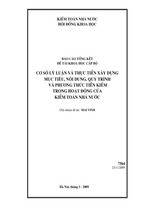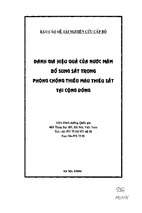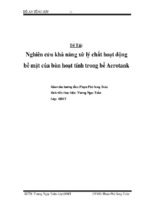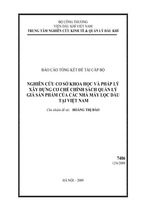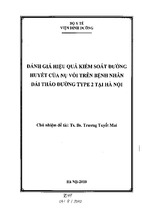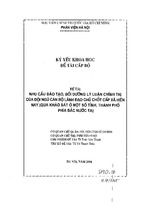Kooij et al. BMC Psychiatry 2010, 10:67
http://www.biomedcentral.com/1471-244X/10/67
REVIEW
Open Access
European consensus statement on diagnosis and
treatment of adult ADHD: The European Network
Adult ADHD
Sandra JJ Kooij1*, Susanne Bejerot2, Andrew Blackwell3, Herve Caci4, Miquel Casas-Brugué5, Pieter J Carpentier6,
Dan Edvinsson7, John Fayyad8, Karin Foeken9, Michael Fitzgerald10, Veronique Gaillac11, Ylva Ginsberg12,
Chantal Henry13, Johanna Krause14, Michael B Lensing15, Iris Manor16, Helmut Niederhofer17, Carlos Nunes-Filipe18,
Martin D Ohlmeier19, Pierre Oswald20, Stefano Pallanti21, Artemios Pehlivanidis22, Josep A Ramos-Quiroga23,
Maria Rastam24, Doris Ryffel-Rawak25, Steven Stes26, Philip Asherson27
Abstract
Background: Attention deficit hyperactivity disorder (ADHD) is among the most common psychiatric disorders of
childhood that persists into adulthood in the majority of cases. The evidence on persistence poses several
difficulties for adult psychiatry considering the lack of expertise for diagnostic assessment, limited treatment
options and patient facilities across Europe.
Methods: The European Network Adult ADHD, founded in 2003, aims to increase awareness of this disorder and
improve knowledge and patient care for adults with ADHD across Europe. This Consensus Statement is one of the
actions taken by the European Network Adult ADHD in order to support the clinician with research evidence and
clinical experience from 18 European countries in which ADHD in adults is recognised and treated.
Results: Besides information on the genetics and neurobiology of ADHD, three major questions are addressed in
this statement: (1) What is the clinical picture of ADHD in adults? (2) How can ADHD in adults be properly
diagnosed? (3) How should ADHD in adults be effectively treated?
Conclusions: ADHD often presents as an impairing lifelong condition in adults, yet it is currently underdiagnosed
and treated in many European countries, leading to ineffective treatment and higher costs of illness. Expertise in
diagnostic assessment and treatment of ADHD in adults must increase in psychiatry. Instruments for screening and
diagnosis of ADHD in adults are available and appropriate treatments exist, although more research is needed in
this age group.
Review
The European Network Adult ADHD
The European Network Adult ADHD was founded in
2003 and includes 40 professionals from 18 countries
across Europe with an interest in and experience of
ADHD in adults http://www.adult-adhd.net. This independent expert panel was set up to help improve the
diagnosis and management of ADHD in adults throughout Europe. It is the opinion of the panel that today,
* Correspondence:
[email protected]
1
PsyQ, psycho medische programma’s, Department Adult ADHD, Carel
Reinierszkade 197, Den Haag, The Netherlands
Full list of author information is available at the end of the article
due to lack of recognition and misunderstanding about
the disorder and the use of appropriate, stimulant or
non-stimulant medication, to control symptoms of
ADHD, many adults with ADHD are misdiagnosed and
are often prevented from receiving effective treatments.
This may lead to unnecessary suffering for individual
patients, their families and work colleagues.
Objectives of consensus statement
The objectives of this consensus statement are to
increase awareness of the following: (1) That ADHD
often presents as an impairing lifelong condition in
adults, yet is currently underdiagnosed and treated in
© 2010 Kooij et al; licensee BioMed Central Ltd. This is an Open Access article distributed under the terms of the Creative Commons
Attribution License (http://creativecommons.org/licenses/by/2.0), which permits unrestricted use, distribution, and reproduction in
any medium, provided the original work is properly cited.
Kooij et al. BMC Psychiatry 2010, 10:67
http://www.biomedcentral.com/1471-244X/10/67
many European countries; (2) That instruments for
screening and diagnosis of ADHD in adults are available; (3) That appropriate treatments exist.
Three major questions are addressed in this statement:
(1) What is the clinical picture of ADHD in adults? (2)
How can ADHD in adults be properly diagnosed? (3)
How should ADHD in adults be effectively treated?
Methodology
This document is the result of three meetings between
2003 and 2009 in which the need for communication
and a consensus statement in Europe were identified.
A formally prepared document with consensus statements agreed by experts within the group was
reviewed and discussed. Following this process the
final document was circulated for written approval by
all members of the European Network. For the assembly of the document, reviews and randomised controlled trials in adults were identified from Medline,
Embase and the Cochrane Database, as well as from
reviews on ADHD in children and cross-referencing
and identification by the participating experts. Details
of the clinical presentation of adults with ADHD were
further informed by clinical expertise. This consensus
statement is written for specialists in psychiatry but is
also intended to increase the understanding of the disorder and to facilitate referral for diagnosis, treatment
and follow-up from primary health care physicians and
other health care providers.
Background
ADHD is among the most common psychiatric disorders in childhood with well established diagnostic and
treatment services available throughout most of Europe.
Until recently, the disorder was considered by many to
resolve during adolescence and young adulthood with
little or no continued impact in adult life [1], although
descriptions of the adult condition appeared in the psychiatric literature from 1976 onwards [2]. However current evidence indicates that in the majority of cases
ADHD persists into adult life where it is associated with
a range of clinical and psychosocial impairments.
Numerous follow-up studies of children with ADHD
show that the disorder persists during adolescence and
adulthood in around two-thirds of individuals [3-11]
either as the full blown disorder or in ‘partial remission’
with persistence of some symptoms associated with continued clinical and psychosocial impairments. In the
meta-analysis of these data from Faraone and colleagues
it was concluded that about 15% retain the full diagnosis
by age 25 years, with a further 50% in partial remission
[12], indicating that around two-thirds of children with
ADHD continue to have impairing levels of ADHD
symptoms as adults.
Page 2 of 24
Although in some cases the symptoms of ADHD may
appear to diminish during adolescence, this may not be
the case relative to controls and does not mean that
functioning is unimpaired. In a follow-up study of 119
boys of 19 years of age with childhood onset ADHD,
symptom levels seemed to be lower than in childhood
but 90% still did not function well [13]. Importantly,
although symptoms levels appear to reduce as people
grow older there are parallel changes among control
groups; so that significant case-control differences are
retained [14].
In a study from the World Health Organisation Mental Health Survey, it was found that childhood predictors
of adult ADHD included the combined subtype of
ADHD in childhood, symptom severity, the presence of
comorbid depression, high rates of other comorbidities,
social adversity and parental psychopathology [3]; while
Biederman had previously reported family history of
ADHD, psychosocial adversity and comorbidity with
conduct, mood and anxiety disorders to be predictors of
persistence [15]. Nevertheless, all forms of ADHD are
known to persist into adulthood including ADHD with
predominantly inattentive symptoms and ADHD associated with milder levels of impairment and
comorbidity.
The prevalence of ADHD in adults estimated from
epidemiological studies is in the range of 2-5% [16-19].
Persistent forms of ADHD are thought to have a higher
familial loading than ADHD that does not persist, with
increased rates of ADHD among the parents and siblings of those with persistent ADHD and high rates of
ADHD among the offspring of parents with ADHD [20].
Twin and adoption studies indicate that the familiality
of ADHD symptoms results from genetic factors rather
than shared environmental risks, providing a further
rationale for considering ADHD as a lifetime condition
[21]. ADHD occurs in around 10-20% of people with
common mental health problems according to epidemiological and clinical research [22-27]. Further studies
show that this rate may be higher in some clinical populations such as those attending forensic, addiction and
personality disorder clinics, highlighting the importance
of screening within such high risk populations [28].
There is growing recognition of the importance of
diagnosing and treating the disorder in parents of children with ADHD [29] since around 20% of parents of
children with ADHD will have ADHD themselves [30].
Furthermore, parents with ADHD may have difficulty in
implementing parent training strategies for the treatment of behavioural problems in their offspring. Since
the recognition of ADHD is relatively recent throughout
much of Europe there are in addition many adults with
ADHD who were never diagnosed or treated for ADHD
when they were children [31]. Recent national guidelines
Kooij et al. BMC Psychiatry 2010, 10:67
http://www.biomedcentral.com/1471-244X/10/67
now recommend that ADHD should be recognised and
appropriately treated throughout the lifespan [32-34].
Despite this, across much of Europe many professionals
working in adult mental health services remain unaware
that ADHD frequently persists into adult life and remain
uninformed about the clinical presentation and the consequences of ADHD across the lifespan.
Another reason for underdiagnosis and treatment of
ADHD in adults is the age-dependent change in the
presentation of ADHD symptoms. The more overtly
impairing symptoms in childhood, hyperactivity and
impulsivity, often become less obvious in adulthood,
shifting the problem to more subtle symptoms such as
inner restlessness, inattention, disorganisation and to
impairment in behaviours related to executive functioning; and this may lead to discontinuation of treatment
when they are still required [13,31,35-39]. Additional
reasons for underdiagnosis of ADHD include the frequent presence of comorbid psychiatric syndromes,
which in clinical practice may be identified as the primary or only diagnosis. Finally, stigma and myths continue to surround the condition and its treatment,
particularly with stimulant medication [40,41].
Stigma in general and among professionals
ADHD is an established disorder in childhood with
child and adolescent mental health or paediatric services for ADHD available across most of Europe. Yet
adult services for people with ADHD remain relatively
scarce despite strong evidence for the benefits of diagnosing and treating ADHD in adults (reviewed in
[32]). There are still many professionals that are
unsure of the diagnosis and the appropriate use of
ADHD medications in adult mental health. Some continue to express fears about treating a ‘non-existent
disease’ or causing drug addiction with stimulant medication, despite evidence to the contrary [42]. The reasons for this are likely to be based on the historical
perception of ADHD as a disorder that is restricted to
childhood and the continued presence of stigma and
clinical mythology that surrounds the disorder and its
treatment; and the traditional separation of adult from
child psychiatry. What is clear is that there remains a
gulf in the perception of the disorder between those
working in paediatric and child and adolescent mental
health services and those working in adult mental
health, that cannot be explained on the basis of validated evidence based information [43].
Stigma related to the term ADHD is one component
of the problem that nearly always arises in the context
of lack of awareness or understanding of available data.
Within the mental health profession stigma is further
associated with the restricted regulatory status in many
countries for most of the medications that treat ADHD
Page 3 of 24
in adults, but has other reasons as well. ADHD in adults
remains a disorder which is poorly understood and
where an ‘emotional burden’ is attached to the term
especially among professionals who have not traditionally been involved in the diagnosis or treatment of
ADHD [42,44,45]. People suffering from ADHD are
often stereotyped as lazy, bad or aggressive, or considered to have a behavioural or special needs problem
rather than a mental health disorder that requires treatment [44]. The diagnosis may also be overlooked
because ADHD is a highly symptomatic disorder and
those less familiar with the onset, course, psychopathology and comorbidities associated with the disorder may
mistake ADHD for other common mental health problems such as mood or personality disorders.
While increasing awareness and availability of accurate
information is a high priority, many education programs
for primary care physicians lack a component for
ADHD so that a high percentage remain unaware of the
way that ADHD affects people beyond the childhood
years [45]. Furthermore, education about adult ADHD
has not been included in most college programs for
medical and psychology students, as well as training of
professionals in adult mental health. Education programs therefore need to target all stages of professional
development, from students through to primary and
secondary care physicians and psychologists, to ensure
appropriate early recognition, diagnosis and treatment
are provided. Referral to specialist clinics should be possible where secondary care physicians lack sufficient
training for more complex cases.
In terms of treatment, stimulants are by far the best
studied and most effective treatment for ADHD across
the lifespan, yet their use in some parts of Europe
remains controversial in children and more widely
across Europe in adults. The recent National Institute
for Health and Clinical Excellence (NICE) guidelines
from the UK describes the situation in which a drug
treatment is considered safe to give to children but not
safe to give to adults as an “anomaly” [32]. The NICE
guidelines have been pivotal in the UK by providing
national guidance for the development of clinical services for adults with ADHD and the recommendation of
stimulants as the usual first line treatment. As a consequence many new clinics are being established and
increasing numbers of adults are provided with effective
treatment in the form of stimulants, despite the lack of
formal recognition by regulatory bodies for use of medicines. The current lack of licensed indications for the
use of stimulants in adults in most European countries
(but not in the US) is not supported by available data,
but rather results from the historical focus on ADHD as
a child disorder, commercial considerations by pharmaceutical companies and caution from regulators: a
Kooij et al. BMC Psychiatry 2010, 10:67
http://www.biomedcentral.com/1471-244X/10/67
situation that may be revised in the next 1-2 years in
Europe as several formulations of methylphenidate and
dexamphetamine are being put forward for registration.
However, a recent safety review of the use of methylphenidate from the European Medicines Agency, which
restricts its recommendation to children over 6 years of
age and adolescents and does not mention use in adults,
has led to methylphenidate no longer being licensed for
use in countries such as Norway.
Genes, environment and neurobiology
Family, twin and adoption studies show that ADHD is a
familial disorder with high heritability, indicating that a
significant genetic component influences risk for the
disorder [46-54]. Environmental factors are also likely to
play a role either as main causal factors in a few cases
[55] or by interaction with genetic risks.
Family studies indicate a risk to first degree relatives
of 4 to 10 fold the population rate, with prevalence
among first degree relatives in the range of 20-50% [20].
Data from numerous twin studies of parent and teacher
rated ADHD in children and adolescents indicate an
average heritability (the variance explained by additive
genetic factors) of around 76% [56], indicating that
familial influences on ADHD are largely genetic.
Furthermore twin studies that have investigated the continuity of ADHD at various developmental stages indicate that continuity of symptoms across the lifespan is
largely the result of shared genetic effects [57-59]. Yet,
studies of self-rated ADHD symptoms in adult population twin samples consistently report lower estimates of
heritability, in the region of 30-40% from two published
[59,60] and one unpublished (Larsson et al., in preparation) study. The reasons for the lower heritability has
not been fully investigated, but is likely to arise from the
use of self-rating ADHD scales in population twin samples for two main reasons. First there may be a variable
level of awareness among individuals when self-rating
their own ADHD symptoms, leading to inaccurate
ADHD symptom scores; and secondly self-ratings of
ADHD symptoms may be confounded by adult onset
conditions that generate ADHD-like symptoms, such as
anxiety, depression, fatigue and drug and alcohol use.
There is however as yet no empirical data to resolve
these questions, so we have to conclude that further
work is needed to fully understand the extent of genetic
influences on ADHD in adults.
Molecular genetic studies in adults are relatively
recent but are expected to confirm some genetic associations identified in childhood ADHD samples and find
other genes that relate to persistence or remission of
ADHD symptoms in adult life. There is a great deal of
interest in the mechanisms by which the disorder persists in some individuals and remits in others, since this
Page 4 of 24
may identify new targets that prevent progression of the
disorder into adult life. One potential mechanism is
suggested by the developmental hypothesis of Jeffrey
Halperin, which proposed that ADHD is linked to an
early-appearing and enduring subcortical dysfunction
(weak arousal mechanisms), while symptom remission is
dependent on the extent of maturational changes in
executive control [61,62]. The emphasis is on the interaction between these two processes, with remission or
persistence of ADHD symptoms related to the emerging
balance between cortical and sub-cortical function.
Whether the processes involved can be neatly separated
into sub-cortical versus cortical is uncertain and
requires further detailed investigations, however a recent
large international study obtained evidence that the
same two processes account for 85% and 12% respectively, of the genetic influences on ADHD [63].
Molecular genetic studies of ADHD in children provide direct support for the association of specific genes
with ADHD. Genetic variants within or near to the D4
(DRD4) and D5 (DRD5) dopamine receptor genes provide the most consistent findings supported by metaanalysis [64]. Numerous other studies find evidence of
association with the dopamine transporter gene (DAT1),
the dopamine beta-hydroxylase gene (DBH), the serotonergic transporter (5-HTT), the serotonergic receptor
(HTR1B), and the synaptosomal-associated protein, 25
kDa (SNAP-25) [48]. Taken together these candidate
gene findings are thought to explain around 3.2% of the
variance in ADHD symptoms in children [65]. More
recently whole genome association studies have identified novel genes such as CDH13 (a Cadherin gene) as
potential risk factors [66] and rare copy number variants
that confer higher risks in the order of odds ratios of 25, depending on general cognitive ability (Williams et
al., reported at the World Congress of Psychiatric
Genetics, 2009).
Molecular genetic studies have also turned to the
study of ADHD in adults in recent years. Much of the
current research coordinated in Europe by Barbara
Franke from the Netherlands for the International Multicentre Persistent ADHD Collaboration (IMPACT)
group. This collaboration has successfully generated a
multi-site sample of around 3,000 patients and is continuing to develop. To date several publications highlight
potential associations with ADHD in adults, some but
not all of which are shared with genetic association findings in children [67-72].
Environmental factors are also associated with ADHD
[73], particularly prenatal risk factors such as exposure
to alcohol, nicotine, drugs, high blood pressure and
maternal stress during pregnancy, as well as preterm
birth and low birth weight [74-76]. Evidence from
Romanian adoptees also suggests that severe early
Kooij et al. BMC Psychiatry 2010, 10:67
http://www.biomedcentral.com/1471-244X/10/67
deprivation is causally related to ADHD [55]. In some
cases the environmental measure may be mediated by
genetic effects and may not always implicate environmental exposure as the primary causal factor. For example there is new evidence that prenatal exposure to
nicotine may reflect genetic effects rather than the direct
toxic effects of nicotine or other constituents of tobacco
smoke [77]. Overall it is likely that environmental risk
factors play an important role in the aetiology of ADHD
and that in many cases the impact of the environment
will be modified by genetic factors.
Neurocognitive, neurophysiological and neuroimaging
studies suggest that brain dysfunctions are involved in
the central components of the syndrome in children and
adults [78-82]. Fronto-striatal dysfunction and increased
dopamine transporter density in the striatum have both
been reported [83-86] although the finding of increased
dopamine transporter density remains a controversial
finding, perhaps secondary to drug treatments for
ADHD [87,88]. Magnetic resonance imaging (MRI) studies indicate smaller volumes of caudate, corpus callosum, cerebellum and right frontal areas, as well as
increased cortical thinning [89-97]. Functional MRI data
show differences in brain functioning between ADHD
and controls including some studies of drug naïve
patients [91,98-103]. Positron emission tomography
(PET) shows abnormal cerebral glucose metabolism in
prefrontal and premotor areas of the frontal lobe in
ADHD adults [104-106]. In addition single photon emission computed tomography studies show studies show
hypoperfusion and hypofunctioning of prefrontal and
striatal regions in children and older adults with ADHD
compared to controls [107,108]. The immediate and
marked response of ADHD symptoms to stimulant
medications such as amphetamines and methylphenidate, which increase levels of synaptic dopamine, suggests that the main underlying pathophysiological
process may involve deficits or imbalances in catecholaminergic, dopaminergic, and nicotinergic functioning
[109-111].
Page 5 of 24
subtypes of ADHD based on the predominant symptom
pattern: inattentive type, hyperactive-impulsive type and
the combined type [112]. The International Classification of Diseases (ICD-10) criteria for HKD as defined by
the World Health Organisation (WHO) are more conservative and define a severe subgroup of people fulfilling the ADHD combined type diagnosis [113]. This
results in a lower estimated prevalence of HKD (about
1%) compared to the prevalence estimates of 4-8% for
ADHD in childhood [114]. ICD-10 criteria also exclude
the presence of common co-occurring disorders including anxiety or depression [115] that are allowed under
the DSM-IV definition of ADHD.
The next edition of the DSM (version 5) now in preparation is due to be published in 2013 and the revised
ICD (version 11) for 2015. The revised DSMV criteria
are expected to follow similar lines to the current criteria with the following expected changes http://www.
dsm5.org:
(1) Symptom thresholds: For older adolescents and
adults (aged 17 and above) only 4 symptoms in
either the inattentive or hyperactive-impulsive
domain are required.
(2) The list of hyperactive-impulsive symptoms has
been increased to 13 to include ‘uncomfortable
doing things slowly or carefully’, ‘is often impatient’,
‘difficult to resist temptations or opportunities’ and
‘tends to act without thinking’.
(3) Descriptions of symptom items have been elaborated to include more specific descriptions of behaviour, some of which are more applicable to adults.
(4) The age of onset criteria has been broadened to
include ‘noticeable inattentive or hyperactive-impulsive symptoms by the age of 12 years’.
(5) The requirement for clear evidence of impairment from the symptoms is a key part of the diagnostic criteria, but is no longer required before the
age of 12 years or younger.
(6) Autism spectrum disorder is no longer listed as
an exclusion criterion.
Clinical Picture of ADHD in adults
Definition of ADHD
The two most frequently used diagnostic terms to
describe the condition in childhood are attention-deficit/hyperactivity disorder (ADHD) and hyperkinetic disorder (HKD). For both definitions the disorder is
defined as a clinical syndrome characterised by the presence of developmentally inappropriate levels of inattention, hyperactivity and impulsivity, starting in childhood
and leading to impairment. The Diagnostic and Statistical Manual of Mental Disorders (DSM-IV) criteria for
ADHD as defined by the American Psychiatric Association are the most widely used criteria and describe three
These changes recognise that impairment from the
symptoms of ADHD may develop later in life and that
in some cases symptoms cannot be clearly identified
until the early adolescent years. The reduction in the
symptom threshold for adults as compared to children
recognises the age-dependent changes in the course of
the disorder, since the lower threshold in adults is still
clinically significant where there is clear evidence of
impairment from the symptoms of ADHD; and better
reflects the characteristics and natural course of the disorder. These changes mean that many people who previously met the ‘in partial remission criteria’ will meet
Kooij et al. BMC Psychiatry 2010, 10:67
http://www.biomedcentral.com/1471-244X/10/67
full criteria for ADHD under the revised DSM-V (see
below for further discussion).
Clinical presentation in adults
Whereas the core symptoms of hyperactivity, impulsivity
and inattention, are well characterised in children, these
symptoms may have different and more subtle expressions in adult life. Comparison with the normal behaviour of age, gender and cognitive ability matched
groups must be taken into account. For instance, where
children with ADHD may run and climb excessively, or
have difficulty in playing or engaging quietly in leisure
activities, adults with ADHD are more likely to experience inner restlessness, inability to relax, or over talkativeness. Hyperactivity may also be expressed as
excessive fidgeting, the inability to sit still for long in
situations when sitting is expected (at the table, in the
movie, in church or at symposia), or being on the go all
the time. Impulsivity may be expressed as impatience,
acting without thinking, spending impulsively, starting
new jobs and relationships on impulse, and sensation
seeking behaviours. Inattention often presents as distractibility, disorganization, being late, being bored, need
for variation, difficulty making decisions, lack of overview, and sensitivity to stress. In addition, many adults
with ADHD experience lifetime mood lability with frequent highs and lows, and short-fuse temper outburst
[35,37,116-118]. Typically, adults with ADHD will not
settle after the age of 30 but continue to change and/or
lose jobs and relationships, either through boredom or
being fired. They are usually underachievers with an
estimated annual twenty two days of excess lost role
performance [119-122]. As a consequence relationships
and jobs are often short lived. Relationships that last are
often impaired due to the inability to listen with concentration to the spouse, not finishing or procrastinating
tasks, often being on a ‘short fuse’ and interrupting conversations [123]. Driving accidents are increased in
young adults with ADHD as a result of being distracted,
impulsive and having an increased need for stimulation
[124-127]. ADHD patients are also more likely to be
subjected to other accidents like dog-bites and burns,
and display an unhealthy lifestyle: smoking, alcohol and
drug abuse, riskier sexual lifestyle, a delayed rhythm due
to chronic sleep problems, lack of structure and inappropriate healthcare [128-132]. Criminality in adulthood
is predicted by ADHD and comorbid conduct disorder
in childhood, especially with substance abuse and antisocial personality disorder in adulthood. Among male
prisoners, ADHD was found to be strongly related to
the number of critical incidents involving aggression
and poorly controlled behaviour even after controlling
for the presence of antisocial personality disorder [133].
ADHD patients are significantly more arrested,
Page 6 of 24
convicted, and incarcerated compared to normal controls, and ADHD is increasingly diagnosed in adults in
forensic psychiatry [134-137].
An additional burden on family life may be the presence of one or more children with ADHD, which happens frequently due to the high familial risks of the
disorder. Adults with ADHD are at risk for poorer parent-child relationships [138]. Inattention problems often
lead to inability to complete independent academic
work, resulting in underachievement at school, during
study and in the workplace compared to their peer
group with equivalent cognitive ability. Therefore many
have lower financial resources [17,18,139-141]. Many
feel isolated and lonely due to social handicaps and
shame about failures. They may have less success with
personal growth, lower ability to present themselves in a
socially appropriate fashion and lower mental and physical well-being, even in the presence of a high IQ
[8,121,142-144].
The clinical picture of ADHD is also coloured by frequent co-morbidity. In childhood, as many as 65% of
children with ADHD have one or more co-morbid conditions, including oppositional defiant and conduct disorder, anxiety and mood disorders, tics or Tourette
syndrome, learning disorders and pervasive developmental disorders (e.g. autism) [145-147]. Similarly in adults,
co-morbidity is the rule, with 75% of clinical patients
having at least one other disorder, and the mean number of psychiatric comorbidities being three [41,148].
Mood, anxiety, sleep, personality and substance use disorders are found, as well as learning and other neurodevelopmental disorders [22,37,41,121,144,148-152].
ADHD has also been associated with earlier onset of
substance abuse [153]. In adults with ADHD, gambling
and other addictions are very common [27,154-158].
Gender issues
As boys dominate clinical samples of ADHD in childhood, female manifestations and gender differences have
been relatively neglected in research as well as clinical
practice [159-162]. In childhood ADHD is identified far
more frequently in boys than girls with around a one in
five ratio in most studies. However, the differences in
prevalence and diagnostic rates according to gender
become far less skewed with age, as more females are
identified and become diagnosed in adulthood
[17,161,163,164]; and in some adult clinical series female
cases may predominate.
Several factors may explain these observations. In
childhood, girls may have less externalizing problems
than boys: they suffer more from internalizing problems,
chronic fatigue and inattention while boys may be more
hyperactive and more aggressive [165,166]. Girls show
lower rates of hyperactivity and comorbid conduct
Kooij et al. BMC Psychiatry 2010, 10:67
http://www.biomedcentral.com/1471-244X/10/67
disorder than males, and more frequently have the inattentive subtype of ADHD, with a later onset of impairment [162,167]. For these reasons, general practitioners
and health care professionals are less aware of ADHD in
girls and they are thus less likely to be referred for treatment [168]. In adulthood, the higher prevalence of anxiety and depressive disorders in women may conceal
underlying ADHD and influence diagnosis and treatment. As more women seek help from psychiatrists than
men, the change in referral pattern may also contribute
to the change in gender ratio within clinical populations
[169].
How can ADHD in adults be properly diagnosed?
Application of clinical criteria
Assessment starts with self-reported symptoms. The
physician should perform an in depth diagnostic interview to look for the characteristic psychopathology by
careful questioning about childhood and current behavioural symptoms. Although the patient appears to be
the best informant, comparison with parent and partner
reports in order to provide more information on severity
and pervasiveness of symptoms, is desirable [170]. Both
DSM-IV and ICD-10 criteria recognise that symptoms
of ADHD and HKD persist beyond childhood into
adulthood, yet neither set of criteria takes account of
age-dependent changes in terms of the number and
severity of symptoms, or changes in the way that the
symptoms of ADHD might present in adults. Rather,
they stipulate the exact same criteria as that applied in
children. However developmental changes occur that
include an increasing role for inattention and other
‘executive function’ difficulties in the impairments
related to the demands of adult life [171]. The DSM-IV
criteria suggest that adults who demonstrate only some
of the symptoms of ADHD should be given a diagnosis
of “ADHD, in partial remission”. This diagnosis, however, seems to underplay the significance of impairments
seen in adults who no longer meeting the full DSM-IV
criteria but show persistence of some impairing symptoms from childhood. In other words adults seem to
outgrow the criteria rather than the disorder.
We therefore conclude that a definition of remission
based on the number of criteria that have to be met in
childhood does not seem appropriate in clinical practice
with adults, especially as symptoms described by both
DSM-IV and ICD-10 criteria typically apply to children
and are not adjusted for developmental age
[13,35,172,173]. Furthermore, restriction of the diagnosis
to ICD-10 criteria that focused on a severe form of the
combined subtype during childhood will lead to underdiagnosis of adults impaired by ADHD symptoms, especially in women. Symptoms of ADHD in adults should
therefore be judged with reference to developmentally
Page 7 of 24
appropriate norms. Preliminary research suggests that
using the current DSM-IV criteria that stipulate six of
nine symptoms of either inattention or hyperactivityimpulsivity, a lower threshold of four of nine of these
symptoms in either domain is sufficient to identify
impairing levels of ADHD symptoms in adults [17,174].
We therefore recommend that future criteria for ADHD
are appropriately adjusted by taking into account agerelated changes to symptoms and their relationship to
impairment.
Further work is now required to clarify whether
broadening the criteria to include those with four or
more symptoms in either domain is sufficiently specific
within adult mental health populations, since by lowering the threshold other acute psychiatric disorders may
generate ADHD-like symptoms that reach this lower
threshold. This is however mainly a problem for crosssectional screening for ADHD, since in clinical practice
the diagnosis is based on eliciting a history of ADHD
symptoms that start in childhood or early adolescence
and are persistent (trait-like) and impairing over time
and can therefore be differentiated from adult onset disorders. The other approach under investigation is the
identification of alternative descriptions of behavioural
impairments seen in adults with ADHD, such as the
ecological executive function deficits described by several authors in recent years [175,176], which may show
greater sensitivity and specificity for the diagnosis in
adults.
As discussed, the expression of ADHD in adults is to
some extent different from that in children and the
diagnostic descriptions of some of the features need to
be adapted to adult expressions of the disorder. For
example, physical overactivity in children could be
replaced in adulthood by constant mental activity, feelings of restlessness and difficulty engaging in sedentary
activities. Furthermore a range of characteristics closely
associated with the core ADHD syndrome often lead to
some of the impairments typically seen in adults with
ADHD. These include symptoms such as disorganization, short-fuse, temper, mood lability and sensitivity to
stress [35,116]. Assessment of symptoms is further complicated by the fact that adults have more ways to adapt
and/or compensate for problems with attention, hyperactivity and impulsivity. For example adults with high
IQ, high socio-economic status or lower levels of
comorbid disorders may have better compensatory
strategies.
Another difference in the evaluation of ADHD in
adults is the usual reliance on self-report of symptoms
rather than informant accounts of behaviour by parents
and teachers. Although the validity of a retrospective
diagnosis of ADHD in adults may be questioned in
some cases, this is also true for other psychiatric
Kooij et al. BMC Psychiatry 2010, 10:67
http://www.biomedcentral.com/1471-244X/10/67
diagnoses that are dependent on descriptions of current
and past behaviour. Self-reports of past and current
symptoms can however be reliable if the patient has
good insight into the condition [177]. Nevertheless, caution is needed as retrospective recall of childhood symptoms may be compromised in adults with ADHD, with
under reporting found to be a common problem due to
difficulties with accurate recall [9,178]. While a diagnosis based only on self-report is possible, such an
approach may lead to underdiagnosis of ADHD and it
may be more reliable to use information from informants as well [179]. Reliance on self-report alone may
also risk over diagnosis in some cases, but until now, no
evidence has emerged that this is the case [180]. For
these reasons it is recommended that whenever possible
corroborating information is obtained from a living parent of older relative for childhood behaviour and a partner, relative or close friend for current behaviour and
symptoms.
Another important criterion to evaluate is the age of
onset. The DSM-IV criterion that some symptoms and
impairment should be evident before the age of 7 years
is difficult to assess accurately in a retrospective diagnostic assessment in adults. In fact, research has failed
to validate to this criterion since it has been found that
the clinical syndrome that defines ADHD has similar
clinical predictions in terms of course, treatment
response and associated impairments regardless of
whether symptoms with impairment started before the
age of 7 years or later [181-187]. This may be particularly important in relation to the inattentive type which
is characterised by a later onset of impairment
[172,174,188], as the inattentive symptoms may have
been missed in the pre-school years and impairment
may not have been noticed or reported until the age of
secondary school.
A further problem is recall bias by parents, since after
decades they may not accurately recall when symptoms
or impairments started. Recent evidence found that on
average parents typically report a later age of onset by
around 5-years, even where earlier age of onset was
known from previous health care records [170,189,190].
One approach to circumvent these problems is to refer
to school reports which may provide more accurate and
relevant information with respect to the age of onset.
For these reasons it is proposed to use a broader onset
criterion, up to early to mid adolescence [186,191] and
this approach has been recommended in the recent
National Institute of Health and Clinical Excellence in
the UK [32]. Clinical judgement should be used in making the diagnosis if symptoms before the age of 7-years
cannot be recalled. In most cases a clear report of at
least some symptoms associated with impairment is
expected by early to mid-adolescence. However, even if
Page 8 of 24
there is no clear recall of childhood symptoms, ADHD
should be considered when the typical syndrome that
defines ADHD is present and there is evidence of lifetime persistence of symptoms indicative of ADHD and
associated impairments. This may for instance, be the
case in some inattentive but talented people in whom
high general cognitive ability and a structured environment may have helped them to cope during childhood
and adolescence. The problem of inattention may
remain unrecognised until they tried to live independently from their parents and were faced with the organisational and attentional demands of higher education
or employment [192].
In addition to the evaluation of symptoms, another
important criterion for the clinical diagnosis of ADHD
is the presence of significant levels of impairment associated with the symptoms. This is critical because the
symptoms of ADHD are found to be continuously distributed throughout the population and there is no natural boundary between affected and unaffected
individuals [193]. As with symptoms of anxiety and
depression, ADHD symptoms are experienced by most
people at times. The disorder is therefore distinguished
from the normal range by the severity (extreme nature)
and persistence of symptoms, and their association with
significant levels of impairment and risk for the development of co-occurring disorders. Criteria relate in part
to cultural expectations and this may explain why diagnostic and treatment rates of ADHD are higher in the
US than many European countries. From a mental
health perspective it is however important to define the
impairments from ADHD at a level that most people
would consider needs some form of medical, psychological or educational intervention and represents a mental health problem [32]. Furthermore, the diagnosis
should not be applied to justify the use of stimulant
medication to enhance performance in the absence of a
wider range of significant impairments indicating a
mental health disorder. Impairments include problems
with the following: self-esteem, personal distress from
the symptoms, social interactions and relationships,
behavioural problems, and the development of comorbid psychiatric syndromes.
Current evidence clearly defines ADHD as a clinical syndrome associated with impairments in multiple domains
including academic difficulties, impaired family relationships, social difficulties and increased rates of conduct problems. In adults with ADHD increased rates of antisocial,
drug use, mood and anxiety disorders are reported in both
cross-sectional and longitudinal follow-up studies; in addition to increased rates of unemployment, poor work performance, lower educational performance, increased rates
of traffic violations and accidents and criminal convictions:
reviewed in NICE, [32].
Kooij et al. BMC Psychiatry 2010, 10:67
http://www.biomedcentral.com/1471-244X/10/67
Finally, the high familial risk among first degree relatives, in the order of 20% or more [20,194], means that
a strong predictor for the ADHD in adults is having a
parent, sibling or child with ADHD. Family history of
ADHD should therefore raise the index of suspicion and
provides further supportive evidence when evaluating
individuals for ADHD.
The assessment process
Diagnosis is based on a careful and systematic assessment
of a lifetime history of symptoms and impairment. It is
not just based on a single clinical impression gained during consultation. Central to this process is the assessment
of childhood-onset, current symptoms of ADHD and the
presence of symptoms and impairment in at least two
domains (school, work, home, interpersonal contacts).
Associated features should be evaluated including mood
lability, temper outbursts and comorbid disorders (see
differential diagnosis). It is important to take a full medical history of psychiatric and somatic treatments, as well
as a family history of psychiatric and neurological problems. It is useful to ask the patient about the pattern of
symptoms, typical of ADHD and its co-morbidities in
his/her family, taking into account familial factors and
the high heritability of the symptoms. Patterns of comorbidity in children and adults with ADHD have been identified and include: mood, anxiety, sleep, conduct and
substance use disorders as well as personality disorders.
Some care must be taken to distinguish between symptoms that often co-occur with the core syndrome of
ADHD (e.g. mood instability, ceaseless mental activity,
avoiding situations such as waiting in lines when frustration may occur) from those of a separate comorbid condition (e.g. bipolar disorder, major depression, anxiety,
personality disorder). Comorbidity being the rule rather
than the exception, the evaluation of co-occurring symptoms, syndromes and disorders must always be part of
the clinical assessment of adult ADHD [148,150].
ADHD is also associated with increased rates of neurodevelopmental traits and disorders including autism
spectrum disorder [195], dyslexia [196] and impaired
motor coordination [197]; which are thought to arise
from overlapping genetic influences. Such neurodevelopmental comorbidities are less well studied in adults with
ADHD, but they are commonly observed in clinical
practice and may lead to continued impairments following successful treatment of ADHD symptoms with medication. It has also been the practice in some European
countries to look for soft neurological signs during the
assessment of adult ADHD, in analogy with the diagnosis of DAMP in childhood (Deficits in Attention, Motor
control and Perception), that often accompanies ADHD
[198,199]. However there is limited data on the DAMP
syndrome in adults.
Page 9 of 24
Comorbid substance use disorder (SUD) deserves special attention due to the high rates of ADHD within
SUD populations. A bidirectional link between ADHD
and SUD is reported [142,200] with ADHD symptoms
over represented in SUD populations [201] and SUD in
ADHD populations [202]. From twenty five published
studies that screened for substance misuse in ADHD
samples prevalence was estimated to be around 45% to
55%. Alcohol and cannabis are the most frequently
abused substances in these populations [201] followed
by lower rates of cocaine and amphetamine abuse [203].
In contrast, from ten studies that screened for undiagnosed ADHD in SUD populations estimates of ADHD
ranged from 11% [204] to 54% [205]. The causes for
such comorbidity are likely to be complex including
altered reward processing in ADHD, increased exposure
to psychosocial risk factors and self treatment. Sometimes patients with ADHD describe self-treatment with
unprescribed stimulants, such as parents trying their
child’s medication. In some other cases, paradoxical
reactions to drugs of abuse are reported by patients who
feel calmer, better able to concentrate and are less
impulsive. While consuming drugs with a stimulant
action such as cocaine or amphetamine is described in a
few cases, it is more common for adults to describe a
general reduction in symptoms from alcohol and cannabis [206,207].
Although there are many challenges in identifying
undiagnosed ADHD in SUD settings, systematic screening is feasible [208]. This is particularly important since
SUD patients with comorbid ADHD often present with
severe forms of SUD [209] characterised by early onset,
extended duration of SUD, greater impairment and a
shorter transition from substance use to dependence
[172]. ADHD has been found to increase suicide risk in
SUD adolescents [210]. In SUD treatment outcomes,
methadone maintenance patients in the USA with significant ADHD symptoms in the two weeks prior to
admission were less likely to achieve abstinence [211].
Close supervision is advised when treating ADHD
patients with SUD with stimulants and in cases where
diversion or abuse is a particular concern, atomoxetine
may be selected as the first line treatment. Research in
ADHD populations suggests that only a small minority
divert or misuse their medication [212] and certain long
acting formulations with a low abuse potential can be
used, although studies of adolescents suggest that 75%
of patients who do misuse medication have comorbid
SUDs [213].
Instruments for screening and diagnosis
There are many screening instruments and diagnostic
interviews available, some of which have been translated
into different languages. Commonly used rating scales
Kooij et al. BMC Psychiatry 2010, 10:67
http://www.biomedcentral.com/1471-244X/10/67
for screening include the ADHD Rating Scale, based on
the DSM-IV criteria [214], and the six item World
Health Organisation Adult ADHD Self-Report Scale
(ASRS) Symptom Checklist (online available without
limitation and in many different languages at http://
www.hcp.med.harvard.edu/ncs/asrs.php [215]. The ASRS
includes questions for each of the 18 DSM-IV items, reworded to better represent the presentation of the
ADHD items in adults. The 6-item short version was
selected on the basis of sequential logistic regression, to
optimize concordance with the clinical classification;
and was estimated to have a sensitivity of 68.7% and
specificity of 99.5% with total classification accuracy of
97.9%, evaluated using population survey data [216].
Specificity of this and other screening tools may be
lower within clinical samples with high rates of other
mental health disorders; and positive screens should
always be followed by full diagnostic evaluations based
on clinical interview data. The ASRS, for example, has
been investigated in a sample with substance use disorders and the sensitivity found to be higher (87.5%) and
specificity lower (68.6%) than that reported in the previous study [217].
To guide the diagnostic assessment process, other selfreport questionnaires are available, such as the Brown
ADD Scale Diagnostic Form (BADDS) [39] that measures only behaviours relating to executive functioning
and inattention; the Conners’ Adult ADHD Rating Scale
that includes the DSM-IV criteria and has different versions for patients and for significant others (CAARS)
[218]; and the Wender Utah Rating Scale (WURS) [219]
that includes also symptoms of other, often comorbid
disorders [220]. The total symptom scores of the ADHD
Rating Scale and the CAARS may be used to screen for
ADHD and to evaluate treatment outcome.
For the main diagnostic assessment use of a structured
diagnostic interview is advised, such as the Conners
Adult ADHD Diagnostic Interview for DSM-IV (CAADID) [221]. An alternative under development is the
Diagnostic Interview for ADHD in adults (DIVA) [222].
Although several of the rating scales and interviews are
available in different languages there is a need for validating these translations for use throughout Europe.
Currently there are no neurobiological or neuropsychological tests for ADHD with sufficient sensitivity and
specificity to serve as an individual diagnostic test [223].
Functional imaging seems promising although more
research is needed to establish its value [224-226]. Neuropsychological tests (e.g. the CANTAB tests, the Stop
Signal Reaction Time, IQ or computerized tests of
executive functions and speeded reaction time
responses) may complement diagnostic assessments and
can provide an objective index of cognitive functions in
the patient with ADHD [227]. There is a recent surge in
Page 10 of 24
interest in the use of cognitive-electrophysiology that
may provide data that is more sensitive to the diagnosis
than cognitive-performance data alone [228,229].
Patients with ADHD may suffer additional cognitive deficits, which may contribute to functional impairment,
such as in learning, reading, writing difficulties, in addition to impairments related to the autistic traits. As
there are no established norms for learning disorders in
adults, it may be difficult to distinguish these disorders
from ADHD-related learning deficits. Further research is
required to provide a full understanding of the cognitive
impairments associated with ADHD in adults.
Despite the poor predictive value of cognitive performance tests, some experts conceptualise ADHD as primarily a deficit of executive functions. While this may
not always be seen in cognitive performance deficits,
impairments are usually seen in the way that people
with ADHD manage daily tasks [175,176]. Many problems reported by adults with ADHD are thought to
reflect executive dysfunctions, including impaired selforganisation, attentional and emotional regulation, sustained effort and alertness; that may only been seen in
performance deficits in every day life and not under test
conditions. This has led to efforts to provide more sensitive behavioural descriptions of performance deficits
seen in ADHD that in general reflect problems of selfcontrol and self-regulation [230]. These new studies are
likely to lead to improved and more sensitive symptom
and behavioural checklists for ADHD in adults.
Differential diagnosis
It is important for the diagnosis of ADHD, as well as
the correct targeting of treatments, to identify comorbid
conditions such as mood, anxiety, psychotic, organic
and substance use disorders; in addition to personality,
tic and autistic spectrum disorders. Because adults with
ADHD often exhibit low self-esteem, low mood, affective lability and irritability, these symptoms may sometimes be confused with dysthymia, cyclothymia or
bipolar disorder and with borderline personality disorder. Furthermore daily mood changes in ADHD are very
common, and represent a poorly regulated but essentially normal range of moods, rather than the more
severe extremes of depression and elation seen in bipolar disorder; and it is argued that chronic mood instability should be considered part of the core syndrome of
ADHD [118,175,231].
ADHD and borderline personality disorder seem to
share impulsivity, affective instability, anger outbursts
and feelings of boredom [35,117,218]. In the ADHD
patient, impulsivity and anger is usually short-lived and
thoughtless, rather than driven; conflict relationships,
suicidal preoccupation, self-mutilation, identity disturbances and feelings of abandonment are usually less
Kooij et al. BMC Psychiatry 2010, 10:67
http://www.biomedcentral.com/1471-244X/10/67
intense than in borderline personality disorder. However, the differences may not be clear-cut because in
both disorders symptoms are chronic and trait-like.
Importantly, individuals presenting with a diagnosis of
personality disorder who present with the ADHD syndrome that started in childhood will in many cases benefit from pharmacological treatments for ADHD
[232,233]. Recent trials in ADHD patients indicate that
besides ADHD symptoms, mood instability improves
with both stimulant treatment and atomoxetine
[234,235]. As the order of treatment will depend on the
presence of and severity of co-morbidities, evaluation of
co-morbid disorders is a key component of the ADHD
assessment using appropriate clinical diagnostic
approaches.
How to treat adults with ADHD
Effective treatments
The symptoms of ADHD can be treated effectively in
both children and adults. The beneficial effects of stimulant medication and atomoxetine on the core symptoms
of ADHD have been demonstrated in numerous studies
in children. An increasing number of studies in adults
demonstrate a similar clinical response to that seen in
children [32,236-239]. Due to the demands and responsibilities of adult life, adults face many problems that are
different from those faced by children and they therefore need a different range of psychosocial and psychological treatments tailored to both their developmental
level and ADHD. Psychological treatments in the form
of psychoeducation, cognitive behaviour therapy, supportive coaching or assistance with organising daily
activities are all thought to be effective [240-242].
Further research is however needed as there is an insufficient evidence base to recommend their routine use in
clinical practice [32].
Impact of non-treatment
Long-term follow-up, epidemiological and clinical studies
have shown that adults with untreated ADHD, when
compared to normal controls, experience higher rates of
academic failure, low occupational status, increased risk
of substance use disorders (tobacco, alcohol or drugs),
accidents and delinquency, and have fewer social relationships or friends [18,121,127,131,243,244]. Patients
diagnosed with ADHD in adulthood often complain that
they did not receive treatment earlier in life and feel that
their life would have been different if they had. Appropriate treatment could have prevented accidents and
ongoing impairment at school, at work and in their peer
and partner relationships. After decades of undiagnosed
and unmet needs, the diagnosis offers an explanation for
their problems which is valuable to a lot of patients and
their family. Treatment of adult ADHD can influence
Page 11 of 24
psychosocial impairment that results as a consequence of
‘core’ ADHD symptoms, and may lead to improvements
in associated features and comorbid disorders [245-247].
These include the following:
•
•
•
•
•
•
•
psychological functioning and self-confidence
family/relationship functioning
interpersonal (broader than family) functioning
professional/academic functioning
cognitive deficits
driving performance
risk of substance use disorders
Optimal treatment algorithm
Similar to the treatment of ADHD in children, a multimodal approach to treatment of adults with ADHD and
associated co-morbid disorders should be taken [248].
Ideally, the treatment plan would also involve the adult’s
partner, family or close relationships. The multimodal
approach includes:
• psycho-education of ADHD and comorbid
disorders
• pharmacotherapy for ADHD and comorbid
disorders
• coaching
• cognitive behaviour psychotherapy (individual and
group)
• family therapy
Treatment focus in co-morbid ADHD
Treatment should follow careful diagnostic assessment of
ADHD and associated comorbid disorders. In the case of
comorbidity, the integrated treatment plan should address
both ADHD and the comorbid condition, the order of
pharmacological treatment depending on the type and
severity of comorbidity. Generally, severe mental health
disorders should be treated first, such as in-patients with
psychosis, major depression, mania or drug addiction; following which the diagnosis of ADHD and need for treatment can be reviewed. However, treatment of milder
depressive and anxiety disorders may be deferred until
after treatment of ADHD and often needs no further treatment as the comorbid symptoms may resolve following
effective treatment of ADHD. Symptoms such as demoralisation and low self-esteem following a life with ADHD,
and mood instability, improve with stimulant treatment
alone [234]. It is up to the clinician to decide on what is
the most important need for every patient with specialist
advice being sort for more complex cases.
With respect to substance use disorders, ADHD is
considered an important factor in its aetiology as the
Kooij et al. BMC Psychiatry 2010, 10:67
http://www.biomedcentral.com/1471-244X/10/67
substances are often used for self-medication and may
relieve symptoms like restlessness, inattention, impulsivity and sleep problems [207,249-251]; or may be taken
as part of stimulus seeking (novelty seeking) traits that
are also associated with ADHD. In such cases, treatment
of ADHD may help patients to stop substance use for
self-medication [252-254] or may reduce impulsive stimulus seeking behaviour. However, systematic research
has not provided a strong evidence base for appreciable
improvements in ADHD when treated in the presence
of substance use disorders [255,256]; and drug or alcohol abuse disorders should always be targeted as a primary disorder. Treating ADHD in parallel with SUD
can however be important in some cases, particularly
where ADHD is severe or where there is good understanding and compliance for the treatment program.
However, in some countries, regulatory rules will not
allow prescription of stimulants in patients with substance use disorders. Patients should be asked to register
their drug/substance intake and be encouraged to stop
their use. Despite concerns that pharmacotherapy with
stimulant medication may be a risk factor for substance
abuse, the literature supports the view that stimulant
treatment for ADHD either has no impact in risk for
substance abuse, or may even lower the risk of substance abuse by reducing the early onset of substance
abuse in adolescents [206,254,257-259].
Psycho-education
Psycho-education is the first step in the treatment plan
and involves educating the patient and ideally also the
partner or family about ADHD symptoms and impairment, the prevalence in children and adults, the frequent comorbidity, the heritability, the brain
dysfunctions involved, as well as the treatment options.
In many cases, simply providing the patient with this
information may help the patient’s understanding and
bring him or her comfort. Often this process offers new
insights into past difficulties. Relationship difficulties
often decline after this sharing of information with
family members. Feelings of guilt and remorse can be
left behind, and the patient’s social network may begin
to be restored. This social network will prove invaluable
to the patient during the treatment process. Informing
the patient about the existence of self-help groups may
be valuable, allowing him or her to join and share information and experiences, as well as to gain further comfort and understanding. There is a need to further
develop structured psychoeducation programs with specific objectives.
Pharmacotherapy for adult ADHD in Europe
Stimulants (methylphenidate and dexamphetamine) are
first choice medication treatments for ADHD in
Page 12 of 24
children and adults, based on an extensive and still
growing body of data concerning efficacy and safety
[32,260]. Atomoxetine is usually considered the second
line treatment, followed by other non-stimulants like
bupropion, guanfacine, modafinil and tricyclic antidepressents, based on efficacy outcomes in controlled studies in different age groups [239,261-264].
Stimulants are effective in about 70% of patients with
ADHD in controlled studies [265-267] depending on the
study design and maximum drug dosage. A recent European study of adults with ADHD showed the effectiveness of methylphenidate over a period of six months, in
the longest double blind placebo controlled trial to date
[268]. Stimulant treatment not only improves the symptoms and impairing behaviours associated with ADHD,
but also improves related problems such as low selfesteem, anger outbursts, mood swings, cognitive problems and social and family function. Side-effects are
usually mild and transitory, mainly consisting of headache, reduced appetite, palpitations, nervousness, difficulty falling asleep, and dry mouth [148,269,270].
Stimulants may increase blood pressure and heart rate,
and decrease weight, therefore patients should be
assessed regarding these issues prior to, and monitored
during treatment. Stimulants are not advised during
pregnancy or breastfeeding and are contraindicated in
psychotic disorders up to now; although some specialists
have treated ADHD successfully in stable patients with
schizophrenia maintained on antipsychotics [271]. Relative contra-indications are hypertension, cardiac problems including angina, hypertrophic cardiomyopathy
and arrhythmias, hyperthyroidism and glaucoma. For
these disorders, first referral to and treatment by a specialist are needed before starting a stimulant. Stimulants
may be used in autism with generally positive effects,
although in some cases autistic features may worsen
[272-275]. A recent meta-analysis indicated that treating
ADHD in children with tic disorders is safe and effective
[276,277]. Stimulants have little impact on seizure
threshold and may be used in epilepsy [278].
Although stimulants are by far the best studied and
most effective treatment for ADHD, their use in some
parts of Europe is still controversial in both children
and adults. It is not yet common practice for doctors to
prescribe stimulant medication to adults. As a result
support services and expertise for treating ADHD in
adults are not always available. As discussed earlier, the
use of stimulants continues to be hampered by stigma
and lack of up to date information in their use, with
restricted access in many European countries [279].
The hesitancy and uncertainty about the appropriate
use stimulant medication by both the general public and
many physicians may also be related to the history of
abuse with amphetamines in the past. Health authorities
Kooij et al. BMC Psychiatry 2010, 10:67
http://www.biomedcentral.com/1471-244X/10/67
have given methylphenidate the same drug classification
as amphetamines and they both perform similar to each
other in traditional assays of abuse [280,281]. Abuse
potential has been studied by Nora Volkow (Director of
the National Institute of Drug Abuse, USA) who showed
that abuse potential relates to the route of administration, with rapid rise in dopamine levels following injection or snorting of stimulants. In contrast, during oral
clinical use, methylphenidate elicits slow steady-state
dopamine increases in the brain which mimic those of
tonic neuron firing, rather than rapid dopamine changes
associated with reinforcing drug-like effects [257]. In the
Volkow study it was found that intravenous methylphenidate could not be distinguished from cocaine by
cocaine addicts, whereas this was not the case for oral
methylphenidate. Therefore the use of extended release
medications that have a slow rate of serum rise, are preferable to reduce potential for abuse and diversion.
Importantly, both clinical studies and clinical experience support the view that the methylphenidate does
not lead to stimulant or drug addictions. On the contrary, it has been shown to have a neutral or reducing
impact on substance abuse and the risk of relapse
[206,253,254]. Furthermore, stimulants are not addictive
from the clinical perspective. Adolescents treated from
childhood generally use less stimulant medication or
stop, using instead of taking more. A common problem
is poor compliance or cessation of treatment during the
adolescent years. There is also no clear evidence of tolerance over time. Neither has stimulant use been associated with adverse effects on driving, but rather is
associated with an improvement in the concentration of
ADHD patients during driving [127,282]. The main
potential problem associated with their use and reported
in a number of studies from the US is the inappropriate
diversion of stimulants, by parents self-treating themselves with their children’s medication or as a cognitive
enhancement medication for college students. This
should not however detract from their specific use to
reduce ADHD symptoms and associated impairments in
people with ADHD [283].
Continued research in adult patients and education
about efficacy and safety may help to overcome these
problems. The non stimulant atomoxetine may be an
alternative to treatment with stimulants in substance
abuse patients with ADHD, although studies showing
superiority over stimulants in this difficult patient population are still lacking [200,284-286].
Types of stimulants
In the United States, more than ten different stimulant
preparations have been developed for treatment of
ADHD, the most recent being long acting formulations
of oros-methylphenidate, mixed amphetamine salts,
Page 13 of 24
dexmethylphenidate
and
lis-dexamphetamine
[265,287,288]. These improvements were necessary
because of the very short half-life leading to relatively
short duration of symptom control from immediate
release methylphenidate (two to four hours) and dexamphetamine (three to five hours). The requirement for a
longer duration of activity in adults, requires repetitive
dosing with immediate release stimulants, of between
three to four doses in most cases, and more often in
others, to avoid rebound symptoms and for adequate
control of ADHD symptoms during the day and evening
[148,270]. Compliance to such frequent dosing regimens
is however poor in ADHD patients due to forgetfulness,
inattentiveness and self-organisation problems, leading
to daily instability by frequent rebound symptoms and
ineffective treatment [148,289-291].
Extended release preparations of stimulants have durations of action between 6 to 14 hours, which may permit once-daily dosing, although an adult may still need
twice daily dosing of medication for a 12-16 hour day.
Currently, combinations of immediate and extended
release preparations are often prescribed in adults with
the aim of tailoring the dose regime to the individual
requirement and medication response of each patient.
Dosing schemes and maximum daily dose vary across
Europe (from 0.3-1.5 mg of methylphenidate/kg/day).
However, the panel recommends that the dose of stimulants in adults should be individually adjusted, based on
response and tolerability. The short half life of the medications suggest that it is more practical to consider
maximum dose in terms of the maximum taken at each
time point, the length of the effect of each dose on the
control of ADHD symptoms, and the number of doses
required to provide symptom control throughout the
day; rather than a maximum based only on mg/kg per
day. Individual differences in the optimal dose response
to stimulant medication means that the best approach is
to titrate the dose for each individual, starting at a low
dose and increasing to an effective dose, while keeping
side effects to a minimum; and should not be determined on a mg/kg basis.
In Europe, limited and different products are registered in the various countries. Some countries still only
have access to immediate release methylphenidate and
may or may not have access to dexamphetamine, while
increasingly the longer-acting extended release preparations are being introduced. In Switzerland Dexmethylphenidate XR was licensed for use in adults in 2009 and
this has been reported as a safe and effective option
[292].
Second line pharmacotherapeutic treatments
For adults with ADHD who do not respond to stimulant
therapy or who have a condition in which a stimulant is
Kooij et al. BMC Psychiatry 2010, 10:67
http://www.biomedcentral.com/1471-244X/10/67
contraindicated, the non-stimulant atomoxetine that is
licensed for child and adult ADHD in the USA is an
appropriate alternative [247]. Atomoxetine has an effect
size of around 0.4 in adults [32,293], a duration of
action of 24 hours, and no abuse potential [294]. Atomoxetine may be indicated in patients with comorbid
substance use disorders, emotional dysregulation or
social anxiety [295-297]. Other choices comprise medications like long acting bupropion, modafinil and guanfacine, that have all been investigated in ADHD
[262,298-300]. Tricyclic antidepressants like Desipramine, an imipramine metabolite, has been shown to be
effective in adults with ADHD [301]. However, these
medications must be considered fourth line agents due
to their side effects, limited value in treating the symptoms of inattention and relatively low effect size compared to stimulants in the treatment of ADHD [302].
In more complicated co-morbid cases, clinical experience indicates that treatment may be combined with
antidepressants and mood stabilizers, although controlled studies are still lacking [303]. A recent review on
drug interactions in the treatment of ADHD concluded
that methylphenidate appears to be more implicated in
pharmacokinetic interactions suggestive of possible
metabolic inhibition, while amphetamine was more
involved in pharmacodynamic interactions and could
potentially be influenced by medications affecting cytochrome P450 (CYP2D6) [304]. Only monoamine oxidase
inhibitors (MAOIs) are contradicted with the concomitant use of stimulants. Other drugs such as antidepressants and antipsychotics can be given at the same time
as stimulants but in a few cases some adjustment in the
dose of either drug might be required. Finally, there is
no consistent evidence from randomised control trials
for the use of food supplements, such as omega-3 fatty
acids ADHD [305].
Coaching and Cognitive Behavioural Therapy
Pharmacotherapy alone is usually not sufficient to stabilise the many problems of adults with ADHD. Coaching
provides a structured, supportive therapy, either individually or in group sessions. Coaching aims to teach problem-solving skills for identified practical problems. Due
to a lifetime history of the impairment, adults with
ADHD have typically not learnt practical organisational
skills [306,307] and may have developed poor coping
skills and inappropriate behaviours in response to the
impairments associated with ADHD.
A coaching program may include:
•
•
•
•
acceptance of the disorder
learning to deal with time management
learning to limit activities to ‘one goal at a time’
organising home, administration, finances
Page 14 of 24
• dealing with relationship and work difficulties
• learning to initiate and complete tasks
• understanding emotional responses associated with
ADHD
These components of coaching are also addressed by
cognitive behavioural therapy for adult ADHD
[241,308]. According to the clinical experience of the
panel, many adults may benefit from supportive and/or
cognitive behavioural therapy in combination with pharmacotherapy. Other forms of psycho-social or family
therapy may help with impairments associated with
ADHD, such as relationship problems and low selfesteem [309]. Psychotherapy targets the adaptation of
the ADHD patient to a lifelong debilitating disorder and
it may relieve co-morbid symptoms.
Current research does not support the efficacy of psychotherapeutic treatments as sole treatment for adult
ADHD; neither do they relieve the core symptoms of
ADHD. They are however considered an import adjunctive treatment for people who prefer a psychological
approach or where residual symptoms or comorbidities
remain. CBT has a strong evidence base for the treatment of some of the comorbidities associated with
ADHD yet there are few controlled trials in adults with
ADHD. The findings in ADHD are reviewed by the
Research Forum on Psychological Treatments for Adults
with ADHD, who identified moderate to large effect
sizes from five empirical studies. They concluded that
psychological treatments may play a critical role in the
management of adults with ADHD who are motivated
and developmentally ready to acquire new skills as
symptoms remit [310]. Safren and colleagues [241] compared CBT plus medication with medication treatment
alone and found significantly greater improvements for
ADHD symptoms and anxiety and depression scores in
the combined treatment group. Similar findings were
reported by Rostain and Ramsey [247], while a further
study reported added benefits from CBT and psychoeducation delivered in a brief intensive group format
[311]. Alternative strategies have focused on strengthening cortical (executive) function with several studies
indicating treatment effects in ADHD symptoms using
techniques such as working memory training and neurofeedback and cognitive remediation therapy in children
[312-316] and meta-cognitive training in adults [317]. A
full review of psychological approaches for ADHD
throughout the lifespan has recently be published by
Young and colleagues [240]
Prognosis and costs
ADHD in adults presents as a lifelong condition that
started during childhood. The precise details of the clinical presentation may change with age and with the
Kooij et al. BMC Psychiatry 2010, 10:67
http://www.biomedcentral.com/1471-244X/10/67
demands of adult life, but are broadly similar to those
seen in children. As medication treatment for ADHD
does not cure the disorder and some or all symptoms
may return after discontinuation of medication, longterm pharmacological and psycho-social treatment may
be necessary. The poor long term prognosis of untreated
ADHD has implications for the costs of illness. In children, the economic burden of ADHD has been estimated to be approximately double those of normal
controls, due to substantially more inpatient as well as
outpatient hospitalisations and emergency department
visits [318]. The economic burden of untreated adult
ADHD has been increasingly studied and shows the
same pattern as in children, with higher than normal
costs of sickness leave, less productivity, more accidents
and more health care costs [141,319,320]. Effective
Page 15 of 24
management of the patient with ADHD is justified from
a health economic perspective since undiagnosed and
untreated ADHD will lead to inefficient health care use,
less satisfactory clinical outcomes, lower personal wellbeing and poorer social and professional interactions.
Conclusions
A summary of the main conclusions is listed in Table 1.
ADHD persists in adults in the majority of subjects with
significant psychosocial impairment and a high comorbidity rate leading to high levels of personal distress and
a substantial economic burden for society if left unidentified and untreated. The lifetime persistence of symptoms and impairment of ADHD is the hallmark of this
disorder in the majority of cases. Diagnosis should
include extensive psychiatric work-up including a
Table 1 Summary of key points from the consensus statement
Neurobiological and
environmental background
• Anomalies in brain functioning identified in case control studies of cognitive, electrophysiological and
neuroimaging studies, and the effectiveness of pharmacological treatments with dopamine agonists support
the neurobiological underpinnings of ADHD.
• High heritability and associated environmental risk factors suggest a primary role for genetic influences that
are moderated by environmental factors in the majority of cases.
Diagnosis
• The gender differences in child and adult ADHD may be due to different expression of symptoms and comorbidities, perception of impairments, and referral bias; and deserve further study.
• Age, gender, and IQ matched reference values are still lacking for diagnostic assessment of ADHD in adults.
• The age-of-onset criteria required for the retrospective diagnosis of ADHD in adults is less reliable and less
important than the persistence of symptoms and impairment of ADHD during the lifespan.
• A cut off of 4/9 current DSM-IV criteria may be sufficient in adults with a childhood onset of symptoms,
when accompanied by significant impairments.
• Age-appropriate presentations of ADHD symptoms should be taken into account when scoring the
symptoms of ADHD in adults.
• The diagnosis of ADHD in adulthood should be based on self-report and in-depth evaluation, but collateral
information is desirable.
• Various instruments are available for screening and assessment of ADHD, but validation studies are urgently
needed.
• Neurobiological and neuropsychological tests are neither imperative nor sufficient for the diagnosis of
ADHD but may document specific functional impairments.
Treatment
• Non- treatment may deprive the patient of the chance to resolve functional and psychosocial impairments
at personal, relationship and professional levels.
• The severity of ADHD and associated co-morbid disorders should be the first guide to select which
disorder to treat first. Treatments can often be combined.
• Albeit local regulatory rules may dictate differently, in patients with ADHD and substance use disorder,
ADHD treatment with stimulants should not be withheld, but rather postponed until problematic substance
use is stopped and there is a commitment to the treatment process.
• Stimulants are the treatment of choice for adults with ADHD. Long-lasting, extended release formulations
are preferred for reasons of adherence to treatment, for the protection against abuse, to avoid rebound
symptoms, for safer driving, and to provide cover throughout the day without the need for multiple dosing.
• The non-stimulant atomoxetine can be a second line treatment. Others like modafinil, bupropion,
guanfacine, and tricyclic antidepressants have shown efficacy in controlled studies.
• Psychotherapy targets the relief of co-morbidities and behavioural, social, cognitive or other functional
impairments.
• The poor long-term prognosis in a substantial part of patients and the absence of a cure upon stopping
medication underline the role of long-term management of the adult with ADHD.
• With appropriate diagnosis and treatment, morbidity may be low, health care use efficient, outcomes better
and associated with lower economic burden.
• More research on ADHD throughout the lifespan until old age is needed.
Kooij et al. BMC Psychiatry 2010, 10:67
http://www.biomedcentral.com/1471-244X/10/67
detailed account of the developmental history, both current and retrospective account of ADHD symptoms and
impairment and associated co-morbidities, before starting treatment. To prevent underreporting of symptoms,
external validation is desirable by collecting information
from relevant informants. The panel recommends multimodal treatment, comprising of psychoeducation, pharmacotherapy, coaching and/or cognitive behavioural
therapy; and ideally involving the adult patient’s partner,
family or close friends. Diagnostic and treatment services for adult ADHD should be established throughout
Europe. European research into adult ADHD should be
further developed in order to provide a better understanding of the way that ADHD presents from childhood until old age, to differentiate ADHD from
common comorbidities and to improve treatment
options.
Acknowledgements
We thank Janssen-Cilag who provided support for meeting costs of the
European Network Adult ADHD.
Author details
1
PsyQ, psycho medische programma’s, Department Adult ADHD, Carel
Reinierszkade 197, Den Haag, The Netherlands. 2Department of Clinical
Neuroscience, Karolinksa Institutet, Section Psychiatry, St. Goran, Stockholm,
Sweden. 3University Department of Psychiatry, Addenbrookes Hospital,
Cambridge, UK. 4Pediatric Department, Hôpitaux Pédiatriques CHU-Lenval,
06200 Nice, France. 5Servicio de Psiquiatria, Hospital Universitari Vall d’
Hebron, Universidad Autonoma de Barcelona, Barcelona, Spain. 6Reinier van
Arkel Groep, Postbus 70058, 5201 DZ ‘s-Hertogenbosch, The Netherlands.
7
Department of Neuroscience/Psychiatri Ulleråker, MK 75, S-750 17 Uppsala,
Sweden. 8Institute of Development, Research, Advocacy and Applied Care
(IDRAAC), Department of Psychiatry and Clinical Psychology, St George
Hospital University Medical Centre, Balamand University, Beirut, Lebanon.
9
Centre des Consultations, Institut A Tzanck, Mougins, France. 10Department
of Psychiatry, Trinity College Dublin (TCD), Dublin 2, Ireland. 11Clinique des
Maladies Mentales et de l’Encéphale (CMME), Sainte Anne Hospital Paris,
France. 12Affektiva mottagningen, M 59, Psykiatri Sydväst, 141 86 Stockholm,
Sweden. 13Département de Psychiatrie Adulte, Unité Lescure, CH Charles
Perrens, Bordeaux, France. 14Private clinic for psychiatry and psychotherapy,
11a Schillerstrasse, Ottobrunn, Germany. 15Department of Child Neurology,
Oslo University Hospital, Ullevaal, Oslo, Norway. 16Geha Mental Health
Center, Petach-Tiqva, Sackler Faculty of Medicine, Tel-Aviv University, Israel.
17
Department of Child Psychiatry, Regional Hospital of Bolzano, Via Guncina,
Bolzano, Italy. 18Faculty of Medical Sciences, New University of Lisbon,
Campo dos Mártires da Pátria, 1169-056 Lisboa, Portugal. 19Department of
Psychiatry, Social Psychiatry and Psychotherapy, Hannover Medical School,
Germany. 20Department of Psychiatry, Brugmann University Hospital,
Université Libre de Bruxelles, Brussels, Belgium. 21Department of
Neurosciences, Florence University, Florence, Italy. 22Department of
Psychiatry, National and Kapodistrian University of Athens Medical School,
Eginition Hospital, Athens, Greece. 23Programa Integral del Déficit de
Atención en el Adulto (P.I.D.A.A), Servei de Psiquiatria, Hospital Universitari
Vall d’Hebron, Barcelona, Spain. 24Department of Clinical Sciences, Lund,
Child and Adolescent Psychiatry, Lund University, Sweden. 25Johanniterstraße
1, CH-3047 Bremgarten, Bern, Switzerland. 26ADHD Program, University
Psychiatric Center, Catholic University Leuven, Kortenberg, Belgium. 27MRC
Social Genetic and Developmental Psychiatry, Institute of Psychiatry, Kings
College London, London, UK.
Authors’ contributions
We thank all co-authors for their considerable expertise in generating the
consensus paper. Authors all gave freely of their time for this work. All
authors took part in meetings between 2003 and 2009 which formulated
Page 16 of 24
the content of the consensus statement. A formally prepared document
with consensus statements was generated by SK and subsequently revised
by PA, with the assistance of all co-authors. The entire content was reviewed
by all the co-authors. Following this process the final document was
circulated for written approval by all members of the European Network and
further changes made on the basis of written comments and text changes.
Competing interests
The following co-authors have no competing interests: Dr Pierre Oswald,
John Fayyad, Doris Ryffel, Karen Foeken, Pieter-Jan Carpentier, Chantal Henry,
Martin D. Ohlmeier, Helmut Niederhofer, Stefano Pallanti, A. Pehlivanidis.
The following co-authors have the following competing interests: Dr. J.J.S.
Kooij has participated in research with and has been on the speaker bureau
of Janssen-Cilag and Eli Lilly. Dr Steven Stes have served as a consultant for
Novartis, received educational grants from Janssen-Cilag, conference
attendance support and/or served on the speaker bureau of Janssen-Cilag,
Novartis, GlaxoSmithKline and Lundbeck, served on the advisory board of
Janssen-Cilag and Novartis and he is also a co-author of a book about adult
ADHD that is commercially available (for patients and their environment). Dr.
J. Antoni Ramos-Quiroga has received fees from Janssen-Cilag, Shire, Lilly
and Rubió and funds from Janssen-Cilag, Lilly and Rubió. Dr. Miguel Casas
has received fees from Janssen-Cilag, Lilly and Rubió and funds from
Janssen-Cilag, Lilly and Rubió. Dr Dan Edvinsson have been a Consultant for
Bristol-Myers Squibb and Novartis, a speaker for Janssen-Cilag, Novartis and
Lundbeck; and participated in medical trials for Janssen-Cilag (Lambda 1+2).
Dr Ylva Ginsberg has served as a consultant and speaker for Janssen-Cilag
and Novartis and as a speaker for Lundbeck. She is a Principal Investigator
for LAMDA 1 and LAMDA 2 funded by Janssen-Cilag. Dr Michael Fitzgerald
has been a consultant for Shire and has been on the advisory board for Lilly
and Janssen Cilag. Dr Michael B. Lensing has received honorarium from
Janssen Cilag as member of a Scientific Committee in connection with NPA
(Nordic Psychiatric Academy ADHD) meetings in 2009 & 2010. Dr Maria
Råstam has acted as speaker for Eli Lilly, Jansen Cilag and Novartis. Dr Iris
Manor is a consultant for Janssen-Cilag and has been Principal Investigator
for Enzymotec Ltd. and Alcobra Ltd. and funded by them for this work. She
has also given courses and lectures to Israeli specialists and pharmacists that
were funded separately by Janssen-Cilag, Teva and Novartis. She was funded
for the IMAGE study by the NIH and is a member of APSARD (The American
Professional Society of ADHD and Related Disorders) and was funded for a
CME about ADHD. Dr Andrew Blackwell is an employee of Cambridge
Cognition Ltd. Dr Hervé CACI have in the past five years received
reimbursements and/or fees from Lilly and Shire and also been an
investigator or principal investigator in studies conducted by Lilly, SanofiSynthélabo, Janssen-Cilag and Shire. Dr Gaillac Veronique took part in the Eli
Lilly atomoxetine adult study (LYDO) and a clinical study on adult ADHD
sponsored by Bioproject. Philip Asherson has received speaker fees and
been on advisory board meetings for Janssen, Shire and Flynn Pharma. He
received an educational grant from Janssen and is principal investigator for
a study funded by Shire.
Received: 4 May 2010 Accepted: 3 September 2010
Published: 3 September 2010
References
1. Hill JC, Schoener EP: Age-dependent decline of attention deficit
hyperactivity disorder. Am J Psychiatry 1996, 153(9):1143-1146.
2. Wood DR, Reimherr FW, Wender PH, Johnson GE: Diagnosis and treatment
of minimal brain dysfunction in adults: a preliminary report. Arch Gen
Psychiatry 1976, 33(12):1453-1460.
3. Lara C, Fayyad J, de Graaf R, Kessler RC, Aguilar-Gaxiola S, Angermeyer M,
Demytteneare K, de Girolamo G, Haro JM, Jin R, et al: Childhood predictors
of adult attention-deficit/hyperactivity disorder: results from the World
Health Organization World Mental Health Survey Initiative. Biol Psychiatry
2009, 65(1):46-54.
4. Lie N: Follow-ups of children with attention deficit hyperactivity disorder
(ADHD). Review of literature. Acta Psychiatr Scand Suppl 1992, 368:1-40.
5. Gittelman R, Mannuzza S, Shenker R, Bonagura N: Hyperactive boys almost
grown up. I. Psychiatric status. Arch Gen Psychiatry 1985, 42(10):937-947.
6. Weiss G, Hechtman L, Milroy T: Psychiatric status of hyperactives as
adults: A controlled prospective 15-year follow-up of 63 hyperactive
children. J Am Acad Child Psychiatry 1985, 24:211-220.
Kooij et al. BMC Psychiatry 2010, 10:67
http://www.biomedcentral.com/1471-244X/10/67
7.
8.
9.
10.
11.
12.
13.
14.
15.
16.
17.
18.
19.
20.
21.
22.
23.
24.
25.
26.
Mannuzza S, Klein RG, Addalli KA: Young adult mental status of
hyperactive boys and their brothers: a prospective follow-up study. J Am
Acad Child Adolesc Psychiatry 1991, 30(5):743-751.
Mannuzza S, Klein RG, Bessler A, Malloy P, et al: Adult outcome of
hyperactive boys: Educational achievement, occupational rank, and
psychiatric status. Arch Gen Psychiatry 1993, 50(7):565-576.
Barkley RA, Fischer M, Smallish L, Fletcher K: The persistence of attentiondeficit/hyperactivity disorder into young adulthood as a function of
reporting source and definition of disorder. J Abnorm Psychol 2002,
111(2):279-289.
Mannuzza S, Klein RG, Moulton JL: Persistence of Attention-Deficit/
Hyperactivity Disorder into adulthood: what have we learned from the
prospective follow-up studies? J Atten Disord 2003, 7(2):93-100.
Rasmussen P, Gillberg C: Natural outcome of ADHD with developmental
coordination disorder at age 22 years: a controlled, longitudinal,
community-based study. Journal of the American Academy of Child and
Adolescent Psychiatry 2000, 39(11):1424-1431.
Faraone SV, Biederman J, Mick E: The age-dependent decline of attention
deficit hyperactivity disorder: a meta-analysis of follow-up studies.
Psychol Med 2006, 36(2):159-165.
Biederman J, Mick E, Faraone SV: Age-dependent decline of symptoms of
attention deficit hyperactivity disorder: impact of remission definition
and symptom type. Am J Psychiatry 2000, 157(5):816-818.
Taylor E, Chadwick O, Heptinstall E, Danckaerts M: Hyperactivity and
conduct problems as risk factors for adolescent development. Journal of
the American Academy of Child and Adolescent Psychiatry 1996,
35(9):1213-1226.
Biederman J, Faraone S, Milberger S, Curtis S, Chen L, Marrs A, Ouellette C,
Moore P, Spencer T: Predictors of persistence and remission of ADHD
into adolescence: results from a four-year prospective follow-up study.
Journal of the American Academy of Child and Adolescent Psychiatry 1996,
35(3):343-351.
Simon V, Czobor P, Balint S, Meszaros A, Bitter I: Prevalence and correlates
of adult attention-deficit hyperactivity disorder: meta-analysis. Br J
Psychiatry 2009, 194(3):204-211.
Kooij JJS, Buitelaar JK, van den Oord EJ, Furer JW, Rijnders CAT,
Hodiamont PPG: Internal and external validity of Attention-Deficit
Hyperactivity Disorder in a population-based sample of adults. Psychol
Med 2005, 35(6):817-827.
Kessler RC, Adler LE, Ames M, Barkley RA, Birnbaum H, Greenberg P,
Johnston JA, Spencer T, Ustun TB: The prevalence and effects of adult
attention deficit/hyperactivity disorder on work performance in a
nationally representative sample of workers. J Occup Environ Med 2005,
47(6):565-572.
Fayyad J, de Graaf R, Kessler R, Alonso J, Angermeyer M, Demyttenaere K,
De Girolamo G, Haro JM, Karam EG, Lara C, et al: Cross-national prevalence
and correlates of adult attention-deficit hyperactivity disorder. Br J
Psychiatry 2007, 190:402-409.
Faraone SV, Biederman J, Monuteaux MC: Toward guidelines for pedigree
selection in genetic studies of attention deficit hyperactivity disorder.
Genetic epidemiology 2000, 18(1):1-16.
Faraone SV, Doyle AE, Knoerzer JA: Heritability of attention-deficit/
hyperactivity disorder. Economics of Neuroscience 2001, 3(5):54-57.
Kessler RC: Comorbidity patterns in a community sample of adults with
ADHD: results from the National Comorbidity Survey Replication. APA
160th Annual Meeting 2007.
Mancini C, Van Ameringen M, Oakman J, Figueiredo D: Childhood
attention deficit/hyperactivity disorder in adults with anxiety disorders.
Psychol Med 1999, 29(3):515-525.
Fones CS, Pollack MH, Susswein L, Otto M: History of childhood attention
deficit hyperactivity disorder (ADHD) features among adults with panic
disorder. J Affect Disord 2000, 58(2):99-106.
Alpert JE, Maddocks A, Nierenberg AA, O’Sullivan R, Pava JA,
Worthington JJ, Biederman J, Rosenbaum JF, Fava M: Attention deficit
hyperactivity disorder in childhood among adults with major
depression. Psychiatry Res 1996, 62(3):213-219.
Fossati A, Novella L, Donati D, Donini M, Maffei C: History of childhood
attention deficit/hyperactivity disorder symptoms and borderline
personality disorder: a controlled study. ComprPsychiatry 2002,
43(5):369-377.
Page 17 of 24
27. Goossensen M, van de Glind G, Carpentier P-J, Wijsen RM, van Duin D,
Kooij J: An intervention program for ADHD in patients with substance
use disorders: Preliminary results of a field trial. J Subst Abuse Treat 2006,
30(3):253-259.
28. Foreman DM, Foreman D, Prendergast M, Minty B: Is clinic prevalence of
ICD-10 hyperkinesis underestimated? Impact of increasing awareness by
a questionnaire screen in an UK clinic. Eur Child Adolesc Psychiatry 2001,
10(2):130-134.
29. Weiss M, Hechtman L, Weiss G: ADHD in parents. JAmAcadChild
AdolescPsychiatry 2000, 39(8):1059-1061.
30. Faraone SV, Biederman J, Feighner JA, Monuteaux MC: Assessing
symptoms of attention deficit hyperactivity disorder in children and
adults: which is more valid? J Consult Clin Psychol 2000, 68(5):830-842.
31. McCarthy S, Asherson P, Coghill D, Hollis C, Murray M, Potts L, Sayal K, de
Soysa R, Taylor E, Williams T, et al: Attention-deficit hyperactivity disorder:
treatment discontinuation in adolescents and young adults. Br J
Psychiatry 2009, 194(3):273-277.
32. NICE: Attention Deficit Hyperactivity Disorder: The NICE guideline on diagnosis
and managment of ADHD in children, young people and adults The British
Psychological Society and The Royal College of Psychiatrists 2008.
33. Ebert D, Krause J, Roth-Sackenheim C: ADHD in adulthood - guidelines
based on expert consensus with DGPPN support (German). Nervenarzt
2003, 74(939):946.
34. Nutt DJ, Fone K, Asherson P, Bramble D, Hill P, Matthews K, Morris KA,
Santosh P, Sonuga-Barke E, Taylor E, et al: Evidence-based guidelines for
management of attention-deficit/hyperactivity disorder in adolescents in
transition to adult services and in adults: recommendations from the
British Association for Psychopharmacology. J Psychopharmacol 2007,
21(1):10-41.
35. Wender PH, Wolf LE, Wasserstein J: Adults with ADHD. An overview. Ann
NY Acad Sci 2001, 931:1-16.
36. Hart EL, Lahey BB, Loeber R, Applegate B, Frick PJ: Developmental change
in attention-deficit hyperactivity disorder in boys: a four-year
longitudinal study. J Abnorm Child Psychol 1995, 23(6):729-749.
37. Kooij JJS, Aeckerlin LP, Buitelaar JK: Functioning, comorbidity and
treatment of 141 adults with attention deficit hyperactivity disorder
(ADHD) at a Psychiatric Outpatients’ Department. [Dutch]. Nederlands
Tijdschrift voor Geneeskunde 2001, 145(31):1498-1501.
38. Fischer M, Barkley RA, Smallish L, Fletcher K: Executive functioning in
hyperactive children as young adults: attention, inhibition, response
perseveration, and the impact of comorbidity. Dev Neuropsychol 2005,
27(1):107-133.
39. Brown TE: Brown Attention-Deficit Disorder Scales. Manual San Antonio: The
Psychological Corporation 1996.
40. Buitelaar JK: [Discussion of attention deficit-hyperactivity disorder
(ADHD): facts, opinions and emotions]. Ned Tijdschr Geneeskd 2001,
145(31):1485-1489.
41. Biederman J, Faraone SV, Spencer T, Wilens T, et al: Patterns of psychiatric
comorbidity, cognition, and psychosocial functioning in adults with
attention deficit hyperactivity disorder. Am J Psychiatry 1993,
150(12):1792-1798.
42. Stockl KM, Hughes TE, Jarrar MA, Secnik K, Perwien AR: Physician
perceptions of the use of medications for attention deficit hyperactivity
disorder. J Manag Care Pharm 2003, 9(5):416-423.
43. Asherson P, Chen W, Craddock B, Taylor E: Adult attention-deficit
hyperactivity disorder: recognition and treatment in general adult
psychiatry. Br J Psychiatry 2007, 190:4-5.
44. Pescosolido BA, Jensen PS, Martin JK, Perry BL, Olafsdottir S, Fettes D: Public
knowledge and assessment of child mental health problems: findings
from the National Stigma Study-Children. J Am Acad Child Adolesc
Psychiatry 2008, 47(3):339-349.
45. Lanham JS: The evaluation of attention deficit/hyperactivity disorder in
family medicine residency programs. South Med J 2006, 99(8):802-805.
46. Faraone SV, Doyle AE: The nature and heritability of attention-deficit/
hyperactivity disorder. Child Adolesc Psychiatr Clin N Am 2001,
10(2):299-292ix.
47. Faraone SV: Genetics of adult attention-deficit/hyperactivity disorder.
Psychiatr Clin North Am 2004, 27:303-321.
48. Faraone SV, Perlis RH, Doyle AE, Smoller JW, Goralnick JJ, Holmgren MA,
Sklar P: Molecular genetics of attention-deficit/hyperactivity disorder. Biol
Psychiatry 2005, 57(11):1313-1323.
Kooij et al. BMC Psychiatry 2010, 10:67
http://www.biomedcentral.com/1471-244X/10/67
49. Sprich S, Biederman J, Crawford MH, Mundy E, Faraone SV: Adoptive and
biological families of children and adolescents with ADHD. J Am Acad
Child Adolesc Psychiatry 2000, 39(11):1432-1437.
50. Moore J, Fombonne E: Psychopathology in adopted and nonadopted
children: a clinical sample. Am J Orthopsychiatry 1999, 69(3):403-409.
51. Gilger JW, Pennington BF, DeFries JC: A twin study of the etiology of
comorbidity: attention-deficit hyperactivity disorder and dyslexia. J Am
Acad Child Adolesc Psychiatry 1992, 31(2):343-348.
52. Sherman DK, Iacono WG, McGue MK: Attention-deficit hyperactivity
disorder dimensions: a twin study of inattention and impulsivityhyperactivity. J Am Acad Child Adolesc Psychiatry 1997, 36(6):745-753.
53. Rietveld MJ, Hudziak JJ, Bartels MvB, CE, Boomsma DI: Heritability of
attention problems in children: longitudinal results from a study of
twins, age 3 to 12. J Child Psychol Psychiatry 2004, 45(3):577-588.
54. Levy F, Hay DA, McStephen M, Wood C, Waldman I: Attention-deficit
hyperactivity disorder: a category or a continuum? Genetic analysis of a
large-scale twin study. J Am Acad Child Adolesc Psychiatry 1997,
36(6):737-744.
55. Stevens SE, Sonuga-Barke EJ, Kreppner JM, Beckett C, Castle J, Colvert E,
Groothues C, Hawkins A, Rutter M: Inattention/overactivity following early
severe institutional deprivation: presentation and associations in early
adolescence. J Abnorm Child Psychol 2008, 36(3):385-398.
56. Faraone SV, Perlis RH, Doyle AE, Smoller JW, Goralnick JJ, Holmgren MA,
Sklar P: Molecular genetics of attention-deficit/hyperactivity disorder. Biol
Psychiatry 2005, 57(11):1313-1323.
57. Kuntsi J, Rijsdijk F, Ronald A, Asherson P, Plomin R: Genetic influences on
the stability of attention-deficit/hyperactivity disorder symptoms from
early to middle childhood. Biol Psychiatry 2005, 57(6):647-654.
58. Larsson JO, Larsson H, Lichtenstein P: Genetic and environmental
contributions to stability and change of ADHD symptoms between 8
and 13 years of age: a longitudinal twin study. Journal of the American
Academy of Child and Adolescent Psychiatry 2004, 43(10):1267-1275.
59. van den Berg SM, Willemsen G, de Geus EJ, Boomsma DI: Genetic etiology
of stability of attention problems in young adulthood. Am J Med Genet B
Neuropsychiatr Genet 2006, 141B(1):55-60.
60. Boomsma DI, Saviouk V, Hottenga JJ, Distel MA, de Moor MH, Vink JM,
Geels LM, van Beek JH, Bartels M, de Geus EJ, et al: Genet epidemiol of
attention deficit hyperactivity disorder (ADHD index) in adults. PloS one
2010, 5(5):e10621.
61. Halperin JM, Schulz KP: Revisiting the role of the prefrontal cortex in the
pathophysiology of attention-deficit/hyperactivity disorder. Psychological
bulletin 2006, 132(4):560-581.
62. Halperin JM, Trampush JW, Miller CJ, Marks DJ, Newcorn JH:
Neuropsychological outcome in adolescents/young adults with
childhood ADHD: profiles of persisters, remitters and controls. Journal of
child psychology and psychiatry, and allied disciplines 2008, 49(9):958-966.
63. Kuntsi J, Wood AC, Rijsdijk F, Johnson KA, Andreou P, Albrecht B, Arias
Vasquez A, Buitelaar J, McLoughlin G, Rommelse N, et al: Seperation of
cognitive impairments in attention deficit hyperactivity disorder into
two familial factors. Arch Gen Psychiatry 2010.
64. Li D, Sham PC, Owen MJ, He L: Meta-analysis shows significant
association between dopamine system genes and attention deficit
hyperactivity disorder (ADHD). Human molecular genetics 2006,
15(14):2276-2284.
65. Kuntsi J, Neale BM, Chen W, Faraone SV, Asherson P: The IMAGE project:
methodological issues for the molecular genetic analysis of ADHD. Behav
Brain Funct 2006, 2:27.
66. Franke B, Neale BM, Faraone SV: Genome-wide association studies in
ADHD. Human genetics 2009, 126(1):13-50.
67. Franke B, Hoogman M, Arias Vasquez A, Heister JG, Savelkoul PJ, Naber M,
Scheffer H, Kiemeney LA, Kan CC, Kooij JJ, et al: Association of the
dopamine transporter (SLC6A3/DAT1) gene 9-6 haplotype with adult
ADHD. Am J Med Genet B Neuropsychiatr Genet 2008, 147B(8):1576-1579.
68. Johansson S, Halmoy A, Mavroconstanti T, Jacobsen KK, Landaas ET, Reif A,
Jacob C, Boreatti-Hummer A, Kreiker S, Lesch KP, et al: Common variants in
the TPH1 and TPH2 regions are not associated with persistent ADHD in
a combined sample of 1,636 adult cases and 1,923 controls from four
European populations. Am J Med Genet B Neuropsychiatr Genet 2010,
153B(5):1008-15.
69. Landaas ET, Johansson S, Jacobsen KK, Ribases M, Bosch R, Sanchez-Mora C,
Jacob CP, Boreatti-Hummer A, Kreiker S, Lesch KP, et al: An international
Page 18 of 24
70.
71.
72.
73.
74.
75.
76.
77.
78.
79.
80.
81.
82.
83.
84.
85.
86.
87.
88.
multicenter association study of the serotonin transporter gene in
persistent ADHD. Genes, brain, and behavior 2010, 9(5):449-58.
Sanchez-Mora C, Ribases M, Ramos-Quiroga JA, Casas M, Bosch R, BoreattiHummer A, Heine M, Jacob CP, Lesch KP, Fasmer OB, et al: Meta-analysis
of brain-derived neurotrophic factor p.Val66Met in adult ADHD in four
European populations. Am J Med Genet B Neuropsychiatr Genet
153B(2):512-523.
Ribases M, Hervas A, Ramos-Quiroga JA, Bosch R, Bielsa A, Gastaminza X,
Fernandez-Anguiano M, Nogueira M, Gomez-Barros N, Valero S, et al:
Association study of 10 genes encoding neurotrophic factors and their
receptors in adult and child attention-deficit/hyperactivity disorder. Biol
Psychiatry 2008, 63(10):935-945.
Ribases M, Ramos-Quiroga JA, Hervas A, Bosch R, Bielsa A, Gastaminza X,
Artigas J, Rodriguez-Ben S, Estivill X, Casas M, et al: Exploration of 19
serotoninergic candidate genes in adults and children with attentiondeficit/hyperactivity disorder identifies association for 5HT2A, DDC and
MAOB. Molecular psychiatry 2009, 14(1):71-85.
Banerjee TD, Middleton F, Faraone SV: Environmental risk factors for
attention-deficit hyperactivity disorder. Acta Paediatr 2007,
96(9):1269-1274.
Milberger S, Biederman J, Faraone SV, Chen L, Jones J: Further evidence of
an association between attention-deficit/hyperactivity disorder and
cigarette smoking. Findings from a high-risk sample of siblings. Am J
Addict 1997, 6(3):205-217.
Milberger S, Biederman J, Faraone SV, Guite J, Tsuang MT: Pregnancy,
delivery and infancy complications and attention deficit hyperactivity
disorder: issues of gene-environment interaction. Biol Psychiatry 1997,
41(1):65-75.
Botting N, Powls A, Cooke RW, Marlow N: Attention deficit hyperactivity
disorders and other psychiatric outcomes in very low birthweight
children at 12 years. J Child Psychol Psychiatry 1997, 38(8):931-941.
Thapar A, Rice F, Hay D, Boivin J, Langley K, van den Bree M, Rutter M,
Harold G: Prenatal smoking might not cause attention-deficit/
hyperactivity disorder: evidence from a novel design. Biol Psychiatry 2009,
66(8):722-727.
Bekker EM, Overtoom CC, Kenemans JL, Kooij JJ, De Noord I, Buitelaar JK,
Verbaten MN: Stopping and changing in adults with ADHD. Psychol Med
2005, 35(6):807-816.
Bekker EM, Kenemans JL, Hoeksma MR, Talsma D, Verbaten MN: The pure
electrophysiology of stopping. International Journal of Psychophysiology
2005, 55(2):191-8.
Seidman LJ, Valera EM, Bush G: Brain function and structure in adults with
attention-deficit/hyperactivity disorder. Psychiatr Clin North Am 2004,
27(2):323-347.
Seidman LJ, Doyle A, Fried R, Valera E, Crum K, Matthews L:
Neuropsychological function in adults with attention-deficit/
hyperactivity disorder. Psychiatr Clin North Am 2004, 27(2):261-282.
Seidman LJ, Valera EM, Makris N: Structural brain imaging of attentiondeficit/hyperactivity disorder. Biol Psychiatry 2005, 57(11):1263-1272.
Krause J: SPECT and PET of the dopamine transporter in attentiondeficit/hyperactivity disorder. Expert Rev Neurother 2008, 8(4):611-625.
Biederman J, Faraone SV: Current concepts on the neurobiology of
Attention-Deficit/Hyperactivity Disorder. J Atten Disord 2002, 6(Suppl 1):
S7-16.
Krause KH, Dresel SH, Krause J, la Fougere C, Ackenheil M: The dopamine
transporter and neuroimaging in attention deficit hyperactivity disorder.
Neuroscience & Biobehavioral Reviews 2003, 27(7):605-613.
Spencer TJ, Biederman J, Madras BK, Dougherty DD, Bonab AA, Livni E,
Meltzer PC, Martin J, Rauch S, Fischman AJ: Further evidence of dopamine
transporter dysregulation in ADHD: a controlled PET imaging study
using altropane. Biol Psychiatry 2007, 62(9):1059-1061.
Swanson JM, Elliott GR, Greenhill LL, Wigal T, Arnold LE, Vitiello B,
Hechtman L, Epstein JN, Pelham WE, Abikoff HB, et al: Effects of stimulant
medication on growth rates across 3 years in the MTA follow-up. Journal
of the American Academy of Child and Adolescent Psychiatry 2007,
46(8):1015-1027.
Volkow ND, Wang GJ, Newcorn J, Fowler JS, Telang F, Solanto MV, Logan J,
Wong C, Ma Y, Swanson JM, et al: Brain dopamine transporter levels in
treatment and drug naive adults with ADHD. Neuroimage 2007,
34(3):1182-1190.
Kooij et al. BMC Psychiatry 2010, 10:67
http://www.biomedcentral.com/1471-244X/10/67
89. Seidman LJ, Valera EM, Makris N, Monuteaux MC, Boriel D, Kelkar K,
Kennedy DN, Caviness VS, Bush G, Aleardi M, et al: Dorsolateral Prefrontal
and Anterior Cingulate Cortex Volumetric Abnormalities in Adults with
Attention-Deficit/Hyperactivity Disorder Identified by Magnetic
Resonance Imaging. Biol Psychiatry 2006, 60(10):1071-1080.
90. Valera EM, Faraone SV, Murray KE, Seidman LJ: Meta-analysis of structural
imaging findings in attention-deficit/hyperactivity disorder. Biol Psychiatry
2007, 61(12):1361-1369.
91. Makris N, Biederman J, Valera EM, Bush G, Kaiser J, Kennedy DN,
Caviness VS, Faraone SV, Seidman LJ: Cortical Thinning of the Attention
and Executive Function Networks in Adults with Attention-Deficit/
Hyperactivity Disorder. Cerebral Cortex 2007, 17(6):1364-1375.
92. Castellanos FX, Giedd JN, Marsh WL, Hamburger SD, Vaituzis AC,
Dickstein DP, Sarfatti SE, Vauss YC, Snell JW, Lange N, et al: Quantitative
brain magnetic resonance imaging in attention-deficit hyperactivity
disorder. Arch Gen Psychiatry 1996, 53(7):607-616.
93. Castellanos FX, Giedd JN, Berquin PC, Walter JM, Sharp W, Tran T,
Vaituzis AC, Blumenthal JD, Nelson J, Bastain TM, et al: Quantitative brain
magnetic resonance imaging in girls with attention- deficit/hyperactivity
disorder. ArchGenPsychiatry 2001, 58(3):289-295.
94. Castellanos FX: Anatomic magnetic resonance imaging studies of
attention-deficit/hyperactivity disorder. Dialogues in Clinical Neuroscience
2002, 4(4):444-448.
95. Semrud-Clikeman M, Filipek PA, Biederman J, Steingard R, Kennedy D,
Renshaw P, Bekken K: Attention-deficit hyperactivity disorder: magnetic
resonance imaging morphometric analysis of the corpus callosum. J Am
Acad Child Adolesc Psychiatry 1994, 33(6):875-881.
96. Durston S, Pol HE, Schnack HG, Buitelaar JK, Steenhuis MP, Minderaa RB,
Kahn RS, van Engeland H: Magnetic resonance imaging of boys with
attention-deficit/hyperactivity disorder and their unaffected siblings.
Child & Adolescent Social Work Journal 2004, 21(1):332-340.
97. Durston S: Converging methods in studying attention-deficit/
hyperactivity disorder: what can we learn from neuroimaging and
genetics? Dev Psychopathol 2008, 20(4):1133-1143.
98. Makris N, Buka SL, Biederman J, Papadimitriou GM, Hodge SM, Valera EM,
Brown AB, Bush G, Monuteaux MC, Caviness VS, et al: Attention and
executive systems abnormalities in adults with childhood ADHD: A DTMRI study of connections. Cereb Cortex 2008, 18(5):1210-1220.
99. Bush G, Frazier JA, Rauch SL, Seidman LJ, Whalen PJ, Jenike MA, Rosen BR,
Biederman J: Anterior cingulate cortex dysfunction in attention-deficit/
hyperactivity disorder revealed by fMRI and the Counting Stroop. Biol
Psychiatry 1999, 45(12):1542-1552.
100. Suskauer SJ, Simmonds DJ, Fotedar S, Blankner JG, Pekar JJ, Denckla MB,
Mostofsky SH: Functional magnetic resonance imaging evidence for
abnormalities in response selection in attention deficit hyperactivity
disorder: differences in activation associated with response inhibition
but not habitual motor response. J Cogn Neurosci 2008, 20(3):478-493.
101. Paloyelis Y, Mehta MA, Kuntsi J, Asherson P: Functional MRI in ADHD: a
systematic literature review. Expert review of neurotherapeutics 2007,
7(10):1337-1356.
102. Pliszka SR, Glahn DC, Semrud-Clikeman M, Franklin C, Perez R, Xiong J,
Liotti M: Neuroimaging of inhibitory control areas in children with
attention deficit hyperactivity disorder who were treatment naive or in
long-term treatment. The Am J Psychiatry 2006, 163(6):1052-1060.
103. Rubia K, Smith AB, Brammer MJ, Toone B, Taylor E: Abnormal brain
activation during inhibition and error detection in medication-naive
adolescents with ADHD. The Am J Psychiatry 2005, 162(6):1067-1075.
104. Zametkin AJ, Nordahl TE, Gross M, King A, et al: Cerebral glucose
metabolism in adults with hyperactivity of childhood onset. New England
Journal of Medicine 1990, 323(20):1361-1366.
105. Zametkin AJ, Liebenauer LL, Fitzgerald GA, King AC, Minkunas DV,
Herscovitch P, Yamada EM, Cohen RM: Brain metabolism in teenagers
with attention-deficit hyperactivity disorder. ArchGenPsychiatry 1993,
50(5):333-340.
106. Ernst M, Zametkin AJ, Matochik JA, Jons PH, Cohen RM: DOPA
decarboxylase activity in attention deficit hyperactivity disorder adults.
A [fluorine-18]fluorodopa positron emission tomographic study. J
Neurosci 1998, 18(15):5901-5907.
107. Lou HC, Henriksen L, Bruhn P, Borner H, Nielsen JB: Striatal dysfunction in
attention deficit and hyperkinetic disorder. Archives of Neurology 1989,
46(1):48-52.
Page 19 of 24
108. Amen DG, Hanks C, Prunella J: Preliminary evidence differentiating ADHD
using brain SPECT imaging in older patients. J Psychoactive Drugs 2008,
40(2):139-146.
109. Wilens TE, Decker MW: Neuronal nicotinic receptor agonists for the
treatment of attention-deficit/hyperactivity disorder: Focus on cognition.
Biochem Pharmacol 2007, 7:7.
110. Krause KH, Dresel SH, Krause J, Kung HF, Tatsch K, Ackenheil M: Stimulantlike action of nicotine on striatal dopamine transporter in the brain of
adults with attention deficit hyperactivity disorder. Int J
Neuropsychopharmacol 2002, 5(2):111-113.
111. Volkow ND, Wang GJ, Kollins SH, Wigal TL, Newcorn JH, Telang F, Fowler JS,
Zhu W, Logan J, Ma Y, et al: Evaluating dopamine reward pathway in
ADHD: clinical implications. Jama 2009, 302(10):1084-1091.
112. APA: American Psychiatric Association, Diagnostic and Statistical Manual
of Mental Disorders. . Washington DC , 4 1994.
113. Tripp G, Luk SL, Schaughency EA, Singh R: DSM-IV and ICD-10: a
comparison of the correlates of ADHD and hyperkinetic disorder.
JAmAcadChild AdolescPsychiatry 1999, 38(2):156-164.
114. Faraone SV, Sergeant J, Gillberg C: The worldwide prevalence of ADHD: is
it an American condition? World Psychiatry 2003, 2:104-113.
115. Lee SI, Schachar RJ, Chen SX, Ornstein TJ, Charach A, Barr C, Ickowicz A:
Predictive validity of DSM-IV and ICD-10 criteria for ADHD and
hyperkinetic disorder. J Child Psychol Psychiatry 2008, 49(1):70-78.
116. Asherson P: Clinical assessment and treatment of attention deficit
hyperactivity disorder in adults. Expert review of neurotherapeutics 2005,
5(4):525-539.
117. Kooij JJS: ADHD in adults. Clinical studies on assessment and treatment.
Radboud University Nijmegen 2006.
118. Skirrow C, McLoughlin G, Kuntsi J, Asherson P: Behavioral, neurocognitive
and treatment overlap between attention-deficit/hyperactivity disorder
and mood instability. Expert review of neurotherapeutics 2009, 9(4):489-503.
119. Biederman J, Petty CR, Fried R, Kaiser R, Dolan CR, Schoenfeld S, Doyle AE,
Seidman LJ, Faraone SV: Educational and occupational underattainment
in adults with attention-deficit/hyperactivity disorder: a controlled study.
J Clin Psychiatry 2008, 69(8):1217-1222.
120. de Graaf R, Kessler RC, Fayyad J, ten Have M, Alonso J, Angermeyer M,
Borges G, Demyttenaere K, Gasquet I, de Girolamo G, et al: The prevalence
and effects of adult attention-deficit/hyperactivity disorder (ADHD) on
the performance of workers: results from the WHO World Mental Health
Survey Initiative. Occup Environ Med 2008, 65(12):835-842.
121. Murphy K, Barkley RA: Attention deficit hyperactivity disorder in adults:
comorbidities and adaptive impairments. ComprPsychiatry 1996,
37(6):393-401.
122. Barkley R, Gordon M: Research on comorbidity, adaptive functioning, and
cognitive impairments in adults with ADHD: Implications for a clinical
practice. In Clinicians’ guide to adult ADHD: Assessment and intervention.
Edited by: Goldstein S, Ellison AT. San Diego, CA: Academic Press, Inc;
2002:43-69.
123. Robin LA: The impact of ADHD on marriage. The ADHD Report 2002,
10(3):9-14.
124. Fischer M, Barkley RA, Smallish L, Fletcher K: Hyperactive children as
young adults: Driving abilities, safe driving behavior, and adverse
driving outcomes. Accident; Analysis and Prevention 2007, 39(1):94-105.
125. Barkley RA, Murphy KR, Kwasnik D: Motor vehicle driving competencies
and risks in teens and young adults with attention deficit hyperactivity
disorder. Pediatrics 1996, 98(6 Pt 1):1089-1095.
126. Barkley RA, Murphy KR, Dupaul GJ, Bush T: Driving in young adults with
attention deficit hyperactivity disorder: Knowledge, performance,
adverse outcomes, and the role of executive functioning. Journal of the
International Neuropsychological Society 2002, 8(5):655-672.
127. Barkley RA, Cox D: A review of driving risks and impairments associated
with attention-deficit/hyperactivity disorder and the effects of stimulant
medication on driving performance. J Safety Res 2007, 38(1):113-128.
128. Swensen A, Birnbaum HG, Ben Hamadi R, Greenberg P, Cremieux PY,
Secnik K: Incidence and costs of accidents among attention-deficit/
hyperactivity disorder patients. J Adolesc Health 2004, 35(4):346-349, e341.
129. Van Veen MM, Kooij JJS, Boonstra AM, Gordijn M, Van Someren EJW:
Disrupted circadian rhythm in adults with ADHD and chronic sleep
onset insomnia. Biol Psychiatry 2009, 67(11):1091-1096.
Kooij et al. BMC Psychiatry 2010, 10:67
http://www.biomedcentral.com/1471-244X/10/67
130. Gau SS, Kessler RC, Tseng WL, Wu YY, Chiu YN, Yeh CB, Hwu HG:
Association between sleep problems and symptoms of attention-deficit/
hyperactivity disorder in young adults. Sleep 2007, 30(2):195-201.
131. Barkley RA: Major life activity and health outcomes associated with
attention-deficit/hyperactivity disorder. J Clin Psychiatry 2002, 63(Suppl
12):10-15.
132. Ohlmeier MD, Peters K, Kordon A, Seifert J, Wildt BT, Wiese B,
Ziegenbein M, Emrich HM, Schneider U: Nicotine and alcohol dependence
in patients with comorbid attention-deficit/hyperactivity disorder
(ADHD). Alcohol and alcoholism (Oxford, Oxfordshire) 2007, 42(6):539-543.
133. Young S, Gudjonsson G, Wells J, Asherson P, Theobald J, Oliver B, Scott C,
Mooney A: Attention deficit hyperactivity disorder and critical incidents
in a Scottish prison population Personality and Individual Differences.
2009, 46:265-269.
134. Mannuzza S, Klein RG, Moulton JL: Lifetime criminality among boys with
attention deficit hyperactivity disorder: a prospective follow-up study
into adulthood using official arrest records. Psychiatry Res 2008,
160(3):237-246.
135. Foley HA, Carlton CO, Howell RJ: The relationship of attention deficit
hyperactivity disorder and conduct disorder to juvenile delinquency:
legal implications. Bull Am Acad Psychiatry Law 1996, 24(3):333-345.
136. Ziegler E, Blocher D, Bro J, Rosler M: Assessment of attention deficit
hyperactivity disorder (ADHD) in prison inmates. [German]. Recht &
Psychiatrie 2003, 21(1):17-21.
137. Young S, Gudjonsson G, Ball S, Lam J: Attention Deficit Hyperactivity
Disorder (ADHD) in personality disordered offenders and the association
with disruptive behavioural problems. Journal of Forensic Psychiatry &
Psychology 2003, 14(3):491-505.
138. Minde K, Eakin L, Hechtman L, Ochs E, Bouffard R, Greenfield B, Looper K:
The psychosocial functioning of children and spouses of adults with
ADHD. J Child Psychol Psychiatry 2003, 44(4):637-646.
139. Weiss G, Hechtman L: Hyperactive children grown up. ADHD in children,
adolescents and adults New York: Guilford Press, 2 1993.
140. Mannuzza S, Klein RG, Bessler A, Malloy P, Hynes ME: Educational and
occupational outcome of hyperactive boys grown up. JAmAcadChild
AdolescPsychiatry 1997, 36(9):1222-1227.
141. Kessler RC, Lane M, Stang PE, Van Brunt DL, Trott GE: The prevalence and
workplace costs of adult attention deficit hyperactivity disorder in a
large manufacturing firm. Psychol Med 2008, 21(1):1-11.
142. Antshel KM, Faraone SV, Maglione K, Doyle A, Fried R, Seidman L,
Biederman J: Is adult attention deficit hyperactivity disorder a valid
diagnosis in the presence of high IQ? Psychol Med 2008, 24:1-11.
143. Mannuzza S, Klein RG: Long-term prognosis in attention-deficit/
hyperactivity disorder. Child AdolescPsychiatrClinNAm 2000, 9(3):711-726.
144. Murphy KR, Barkley RA, Bush T: Young adults with attention deficit
hyperactivity disorder: subtype differences in comorbidity, educational,
and clinical history. J Nerv Ment Dis 2002, 190(3):147-157.
145. Biederman J, Newcorn J, Sprich S: Comorbidity of attention deficit
hyperactivity disorder with conduct, depressive, anxiety, and other
disorders. Am J Psychiatry 1991, 148(5):564-577.
146. Goldman LS, Genel M, Bezman RJ, Slanetz PJ: Diagnosis and treatment of
attention-deficit/hyperactivity disorder in children and adolescents.
Jama: Journal of the American Medical Association 1998, 279(14):1100-1107.
147. Pliszka SR: Comorbidity of attention-deficit/hyperactivity disorder with
psychiatric disorder: an overview. J Clin Psychiatry 1998, 59(Suppl 7):50-58.
148. Kooij JJS, Burger H, Boonstra AM, van der Linden PD, Kalma LE, Buitelaar JK:
Efficacy and safety of methylphenidate in 45 adults with attentiondeficit/hyperactivity disorder. A randomized placebo-controlled doubleblind cross-over trial. Psychol Med 2004, 34(6):973-982.
149. Shekim WO, Asarnow RF, Hess E, Zaucha K: A clinical and demographic
profile of a sample of adults with attention deficit hyperactivity disorder,
residual state. Comprehensive Psychiatry 1990, 31(5):416-425.
150. Biederman J: Impact of comorbidity in adults with attention-deficit/
hyperactivity disorder. J Clin Psychiatry 2004, 65(Suppl 3):3-7.
151. Rasmussen K, Almvik R, Levander S: Attention deficit hyperactivity
disorder, reading disability, and personality disorders in a prison
population. J Am Acad Psychiatry Law 2001, 29(2):186-193.
152. Mannuzza S, Klein RG, Bessler A, Malloy P, LaPadula M: Adult psychiatric
status of hyperactive boys grown up. AmJPsychiatry 1998, 155(4):493-498.
Page 20 of 24
153. Wilens TE, Prince JB, Biederman J, Spencer TJ, Frances RJ: Attention-deficit
hyperactivity disorder and comorbid substance use disorders in adults.
Psychiatr Serv 1995, 46(8):761-763, 765.
154. Wilens TE: The nature of the relationship between attention-deficit/
hyperactivity disorder and substance use. J Clin Psychiatry 2007, 68(Suppl
11):4-8.
155. Wilens TE, Biederman J, Mick E: Does ADHD affect the course of
substance abuse? Findings from a sample of adults with and without
ADHD. Am J Addict 1998, 7(2):156-163.
156. Wilens TE, Hahesy AL, Biederman J, Bredin E, Tanguay S, Kwon A,
Faraone SV: Influence of parental SUD and ADHD on ADHD in their
offspring: preliminary results from a pilot-controlled family study. Am J
Addict 2005, 14(2):179-187.
157. Fayyad J, De Graaf R, Kessler R, Alonso J, Angermeyer M, Demyttenaere K,
De Girolamo G, Haro JM, Karam EG, Lara C, et al: Cross-national prevalence
and correlates of adult attention-deficit hyperactivity disorder. Br J
Psychiatry 2007, 190:402-409.
158. Breyer JL, Botzet AM, Winters KC, Stinchfield RD, August G, Realmuto G:
Young Adult Gambling Behaviors and their Relationship with the
Persistence of ADHD. J Gambl Stud 2009, 13:13.
159. Arnold LE: Sex differences in ADHD: conference summary. JAbnormChild
Psychol 1996, 24(5):555-569.
160. Biederman J, Faraone SV, Spencer T, Wilens T, Mick E, Lapey KA: Gender
differences in a sample of adults with attention deficit hyperactivity
disorder. Psychiatry Res 1994, 53(1):13-29.
161. Biederman J, Faraone SV, Monuteaux MC, Bober M, Cadogen E: Gender
effects on attention-deficit/hyperactivity disorder in adults, revisited. Biol
Psychiatry 2004, 55(7):692-700.
162. Biederman J, Mick E, Faraone SV, Braaten E, Doyle A, Spencer T, Wilens TE,
Frazier E, Johnson MA: Influence of gender on attention deficit
hyperactivity disorder in children referred to a psychiatric clinic. Am J
Psychiatry 2002, 159(1):36-42.
163. Kessler RC, Adler L, Berkley R, Biederman J, Conners CK, Demler O,
Faraone SV, Greenhill LL, Howes MJ, Secnik K, et al: The prevalence and
correlates of adult ADHD in the United States: Results from the National
Comorbidity Survey Replication. Am J Psychiatry 2006, 163(4):716-723.
164. Taylor EW, Keltner NL: Messy purse girls: Adult females and ADHD.
Perspectives in Psychiatric Care 2002, 38(2):69-72.
165. Dopfner M, Pluck J, Berner W, Fegert JM, Huss M, Lenz K, Schmeck K,
Lehmkuhl U, Poustka F, Lehmkuhl G: Mental disturbances in children and
adolescents in Germany. Results of a representative study:age,gender
and rater effects. Zeitschrift fur Kinder-und Jugendpsychiatrie und
Psychotherapie 1997, 25(4):218-233.
166. Newcorn JH, Halperin JM, Jensen PS, Abikoff HB, Arnold LE, Cantwell DP,
Conners CK, Elliott GR, Epstein JN, Greenhill LL, et al: Symptom profiles in
children with ADHD: effects of comorbidity and gender. JAmAcadChild
AdolescPsychiatry 2001, 40(2):137-146.
167. Nadeau KG, Quinn PO: Understanding women with AD/HD Silver Spring:
Advantage Books 2002.
168. Biederman J, Faraone SV, Mick E, Williamson S, Wilens TE, Spencer TJ,
Weber W, Jetton J, Kraus I, Pert J, et al: Clinical correlates of ADHD in
females: findings from a large group of girls ascertained from pediatric
and psychiatric referral sources. J Am Acad Child Adolesc Psychiatry 1999,
38(8):966-975.
169. Judd F, Komiti A, Jackson H: How does being female assist help-seeking
for mental health problems? Aust N Z J Psychiatry 2008, 42(1):24-29.
170. Kooij JJS, Boonstra AM, Willemsen-Swinkels SHN, Bekker EM, Noord Id,
Buitelaar JK: Reliability, validity, and utility of instruments for self-report
and informant report regarding symptoms of Attention-Deficit/
Hyperactivity Disorder (ADHD) in adult patients. Journal of Attention
Disorders 2008, 11(4):445-458.
171. Brown TE, (Ed): Attention-deficit disorders and comorbidities in children,
adolescents, and adults Washington, DC: American Psychiatric Publishing, Inc
2000.
172. Applegate B, Lahey BB, Hart EL, Biederman J, Hynd GW, Barkley RA,
Ollendick T, Frick PJ, Greenhill L, McBurnett K, et al: Validity of the age-ofonset criterion for ADHD: a report from the DSM-IV field trials. J Am
Acad Child Adolesc Psychiatry 1997, 36(9):1211-1221.
173. Barkley RA: ADHD–Long-term course, adult outcome, and comorbid
disorders. In Attention deficit hyperactivity disorder: State of the science-best










